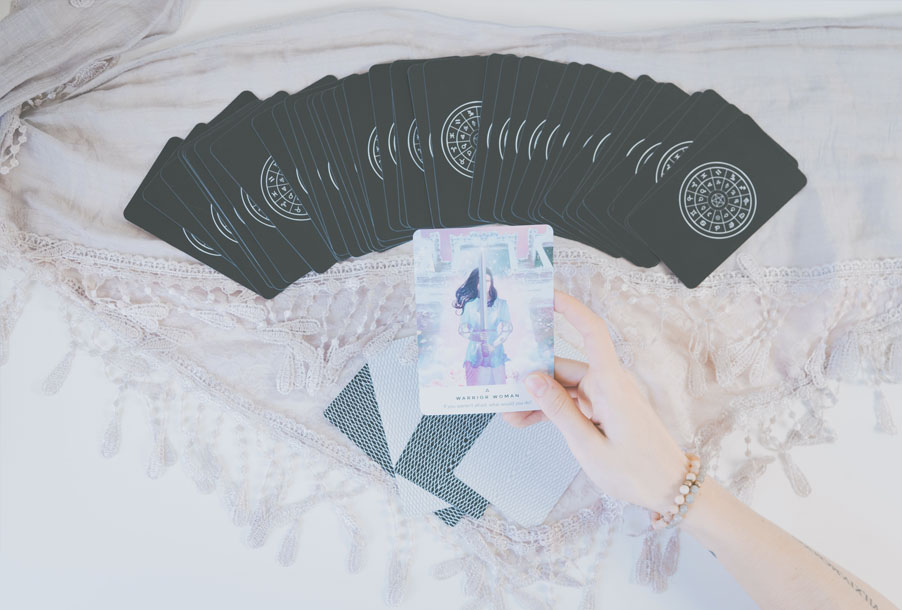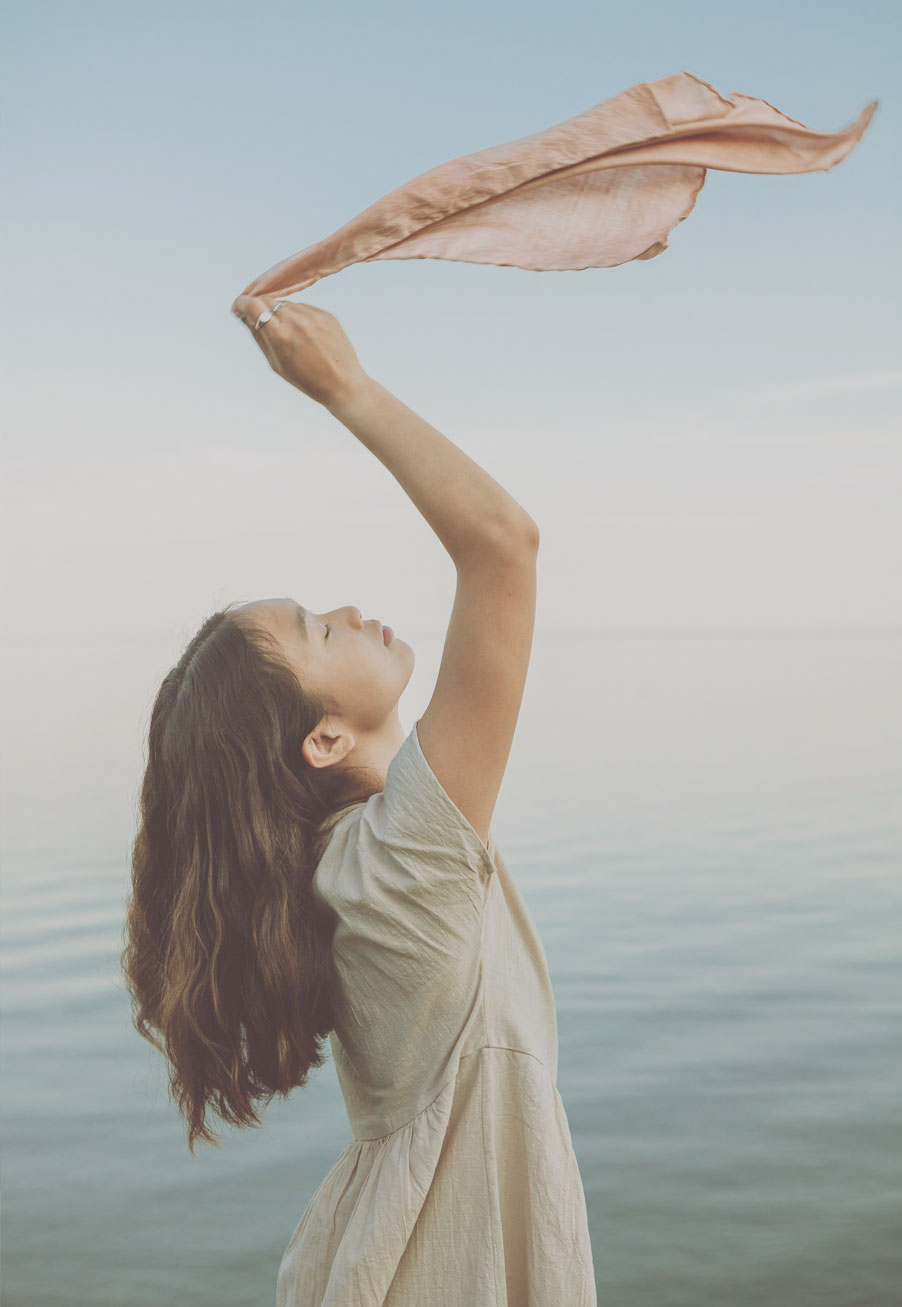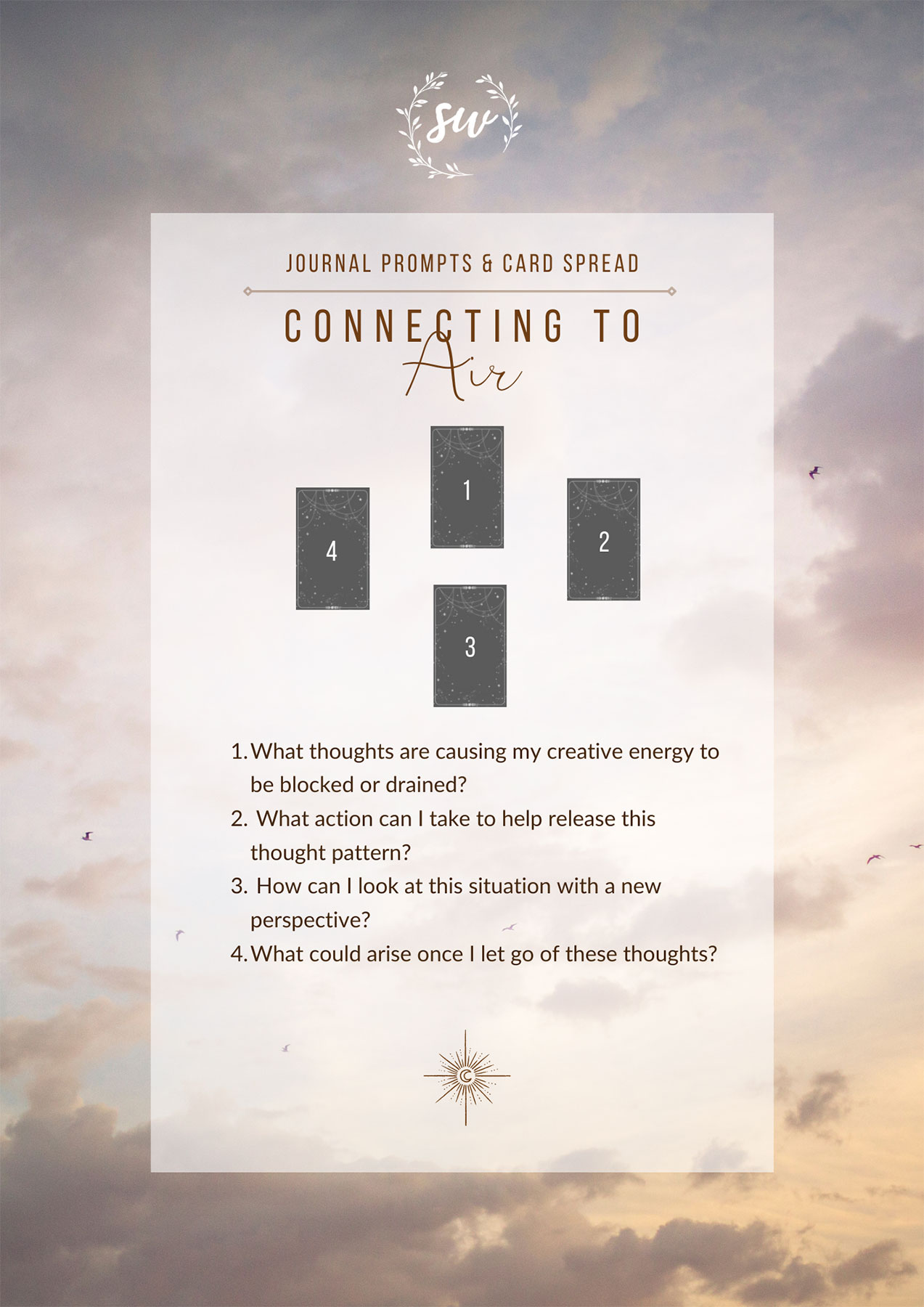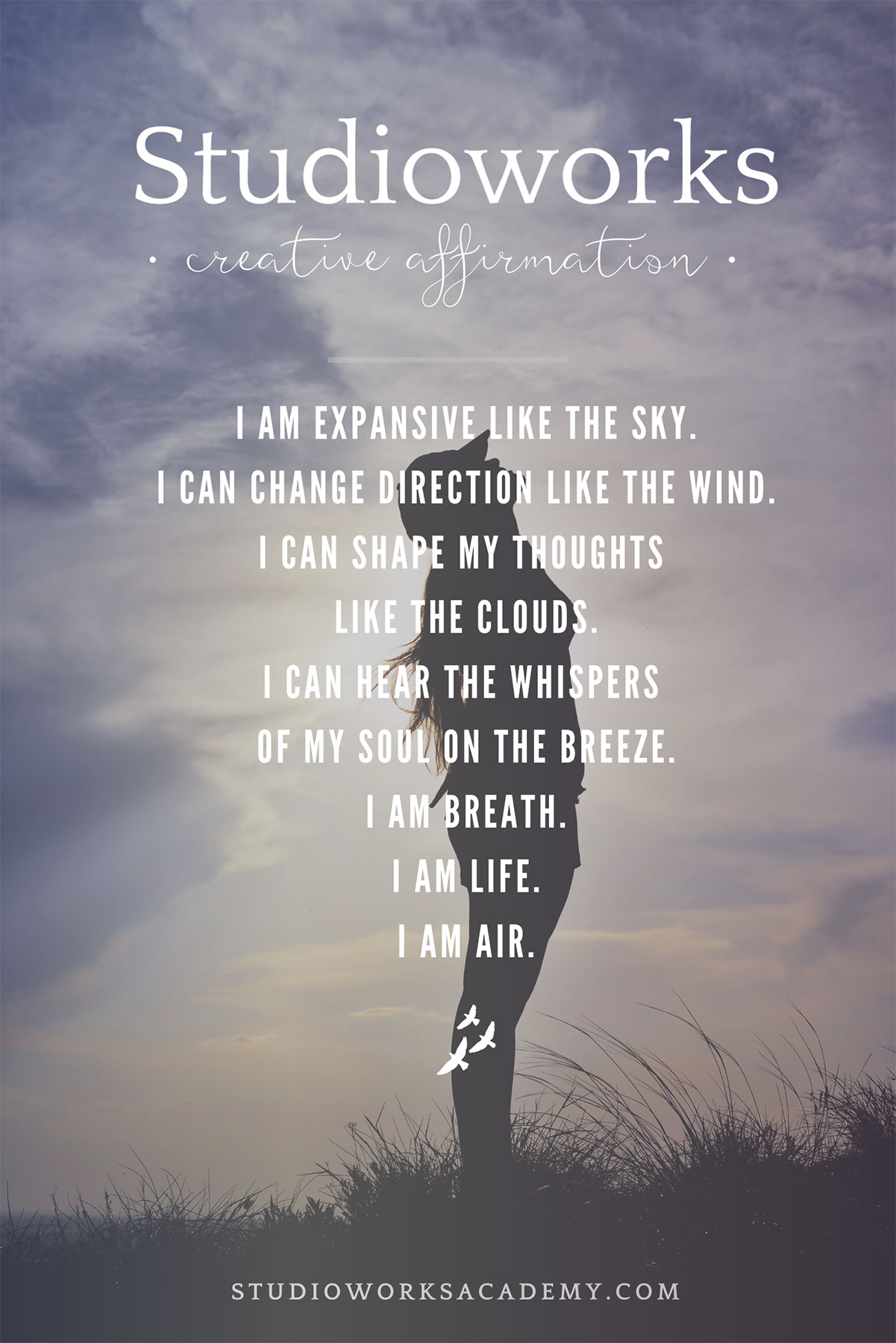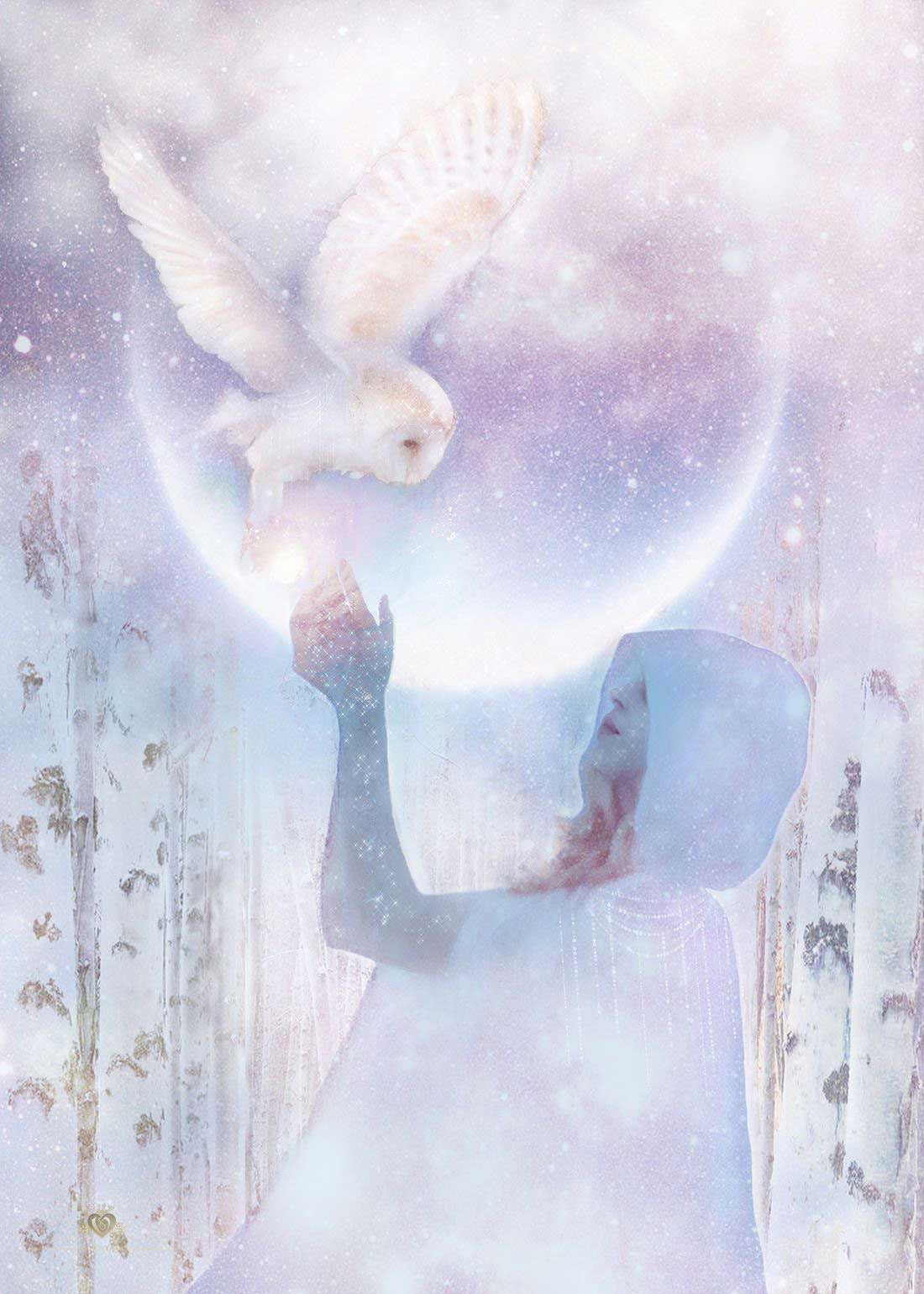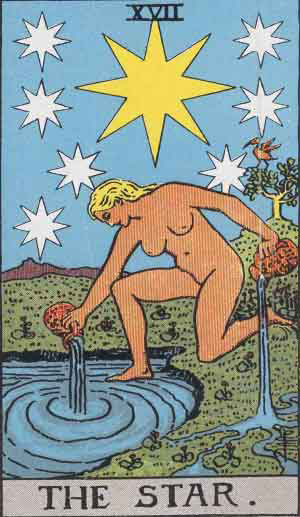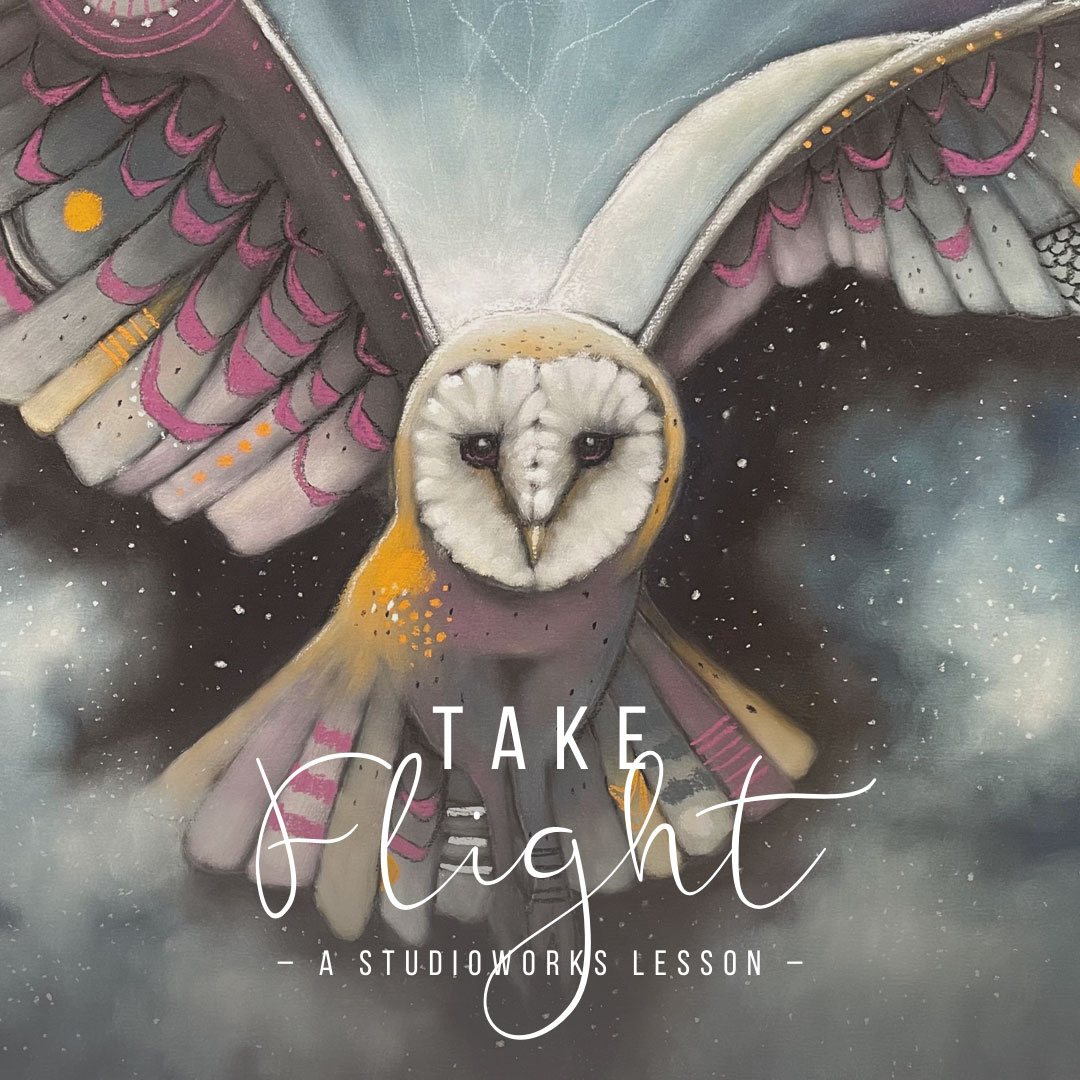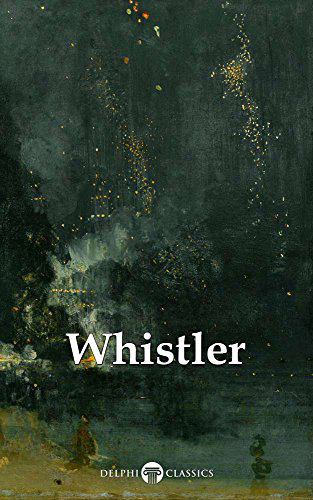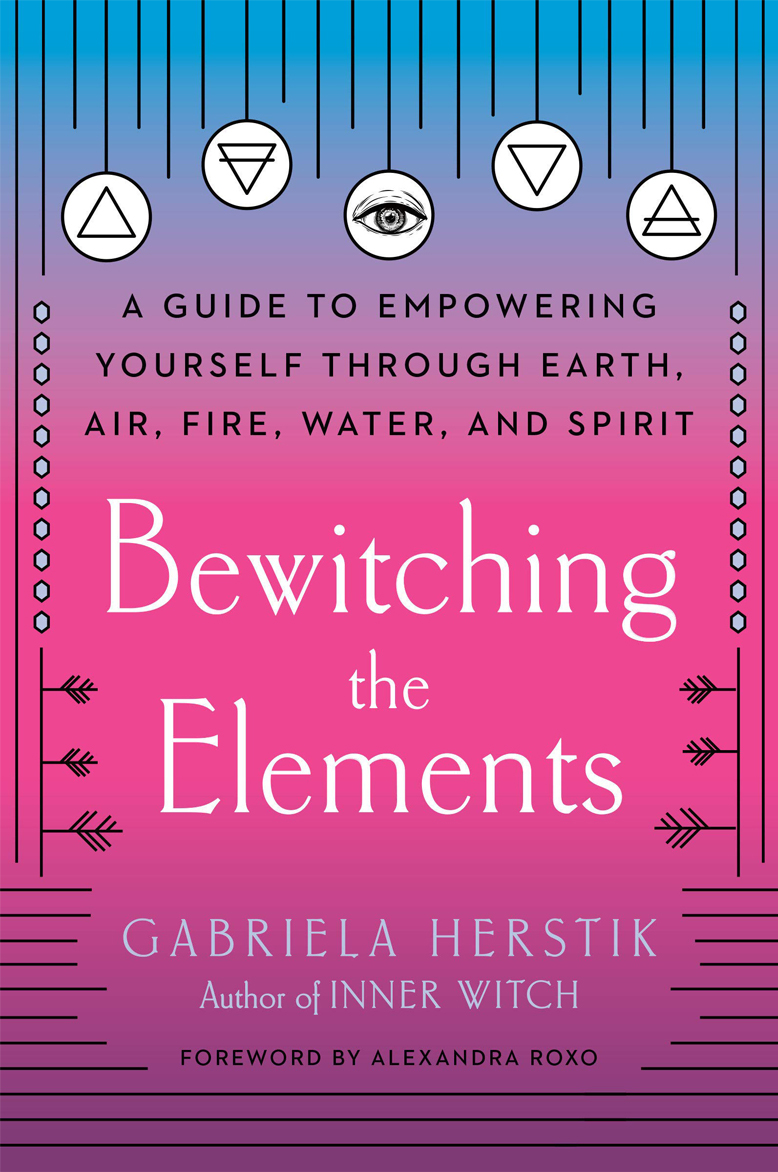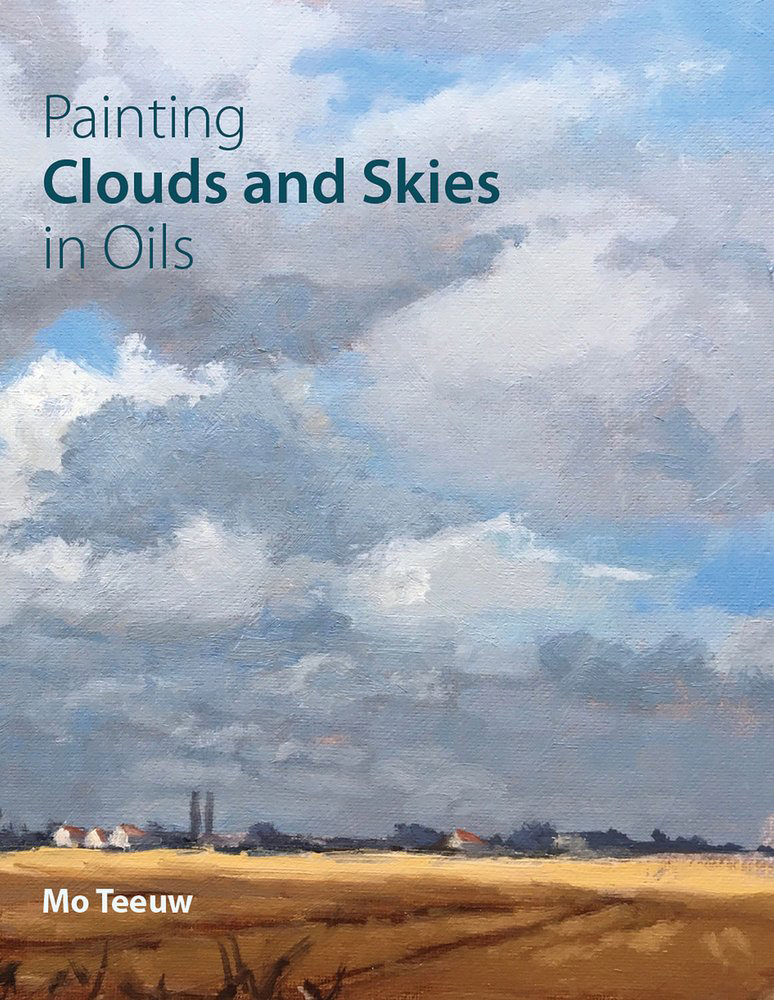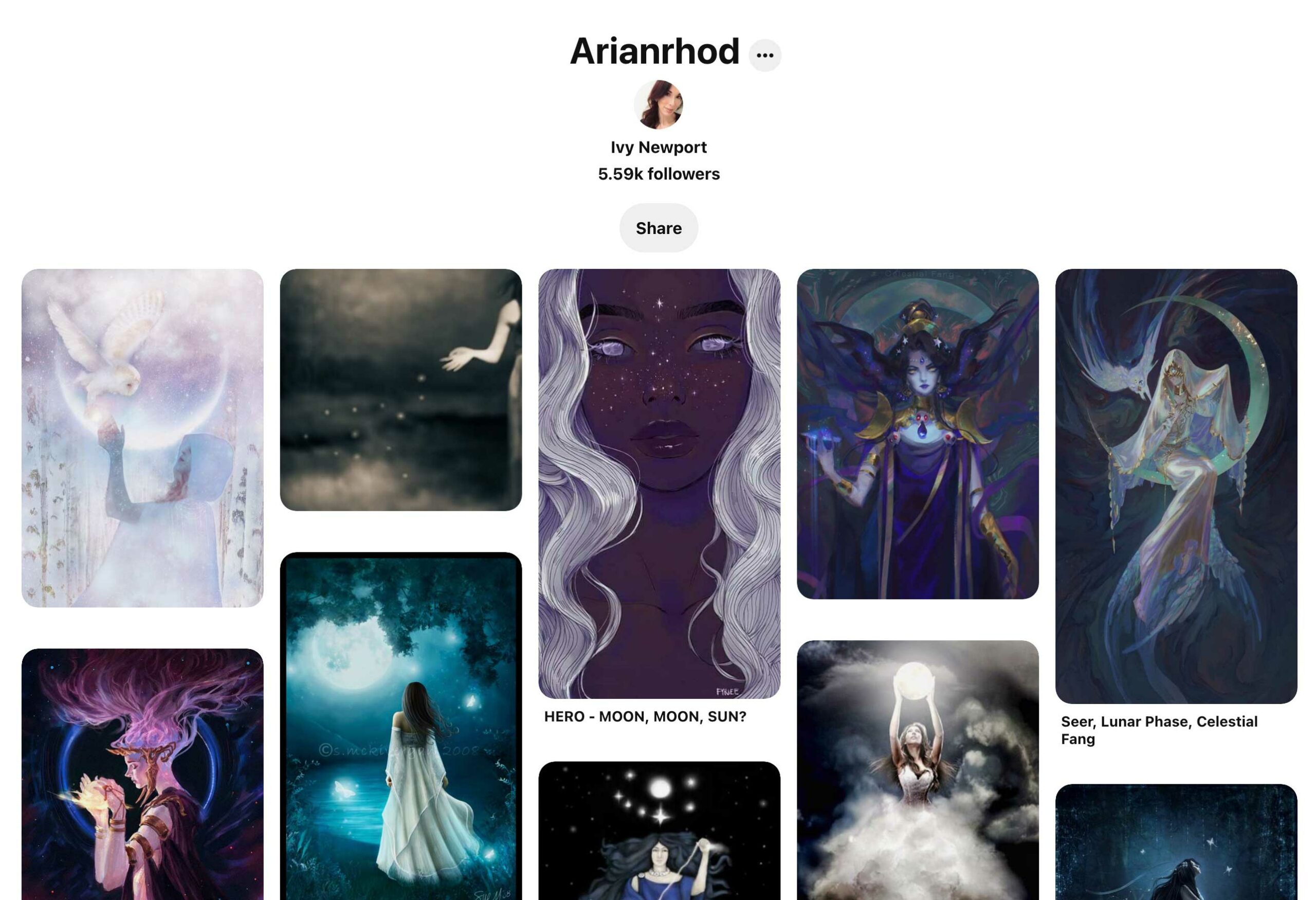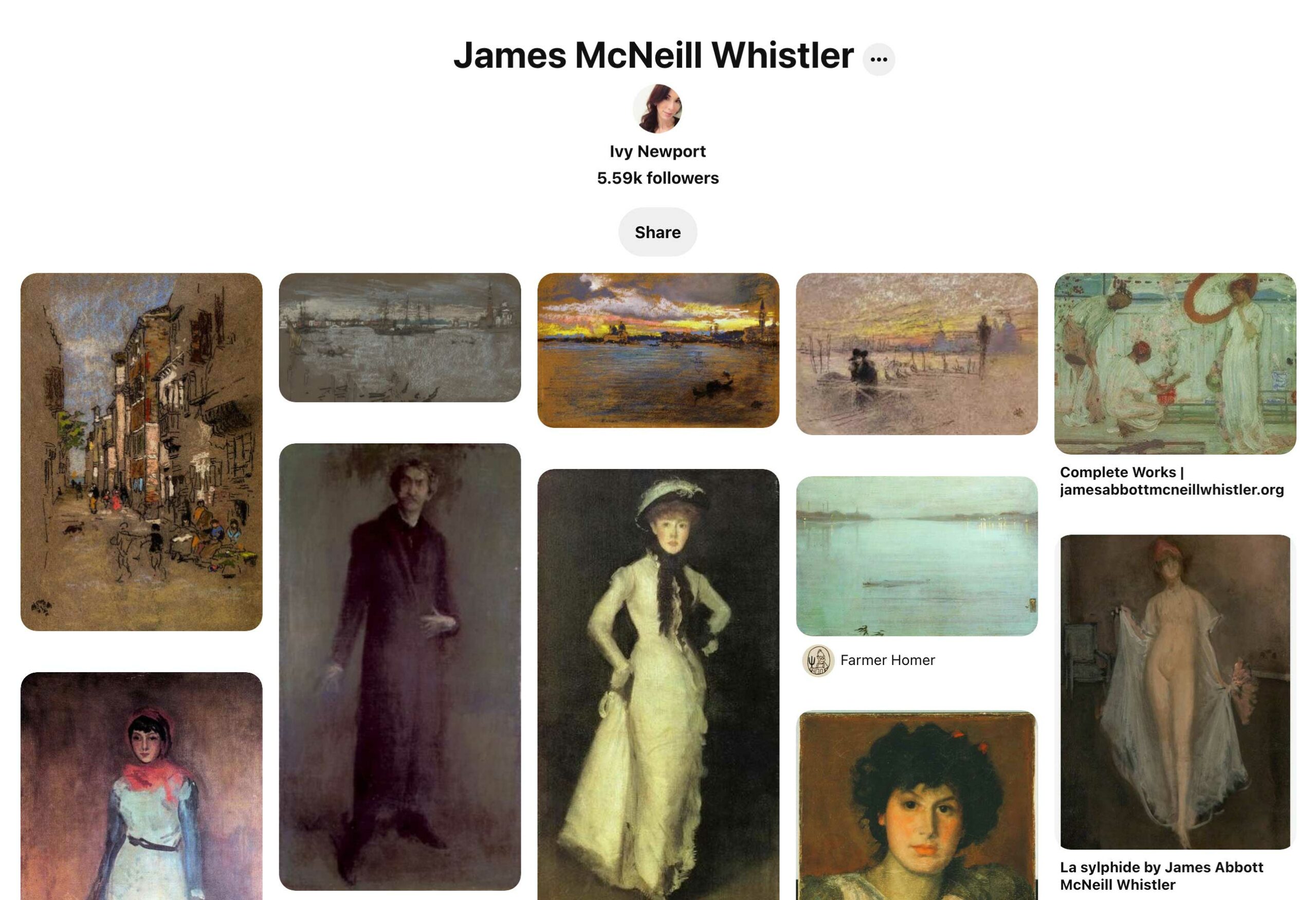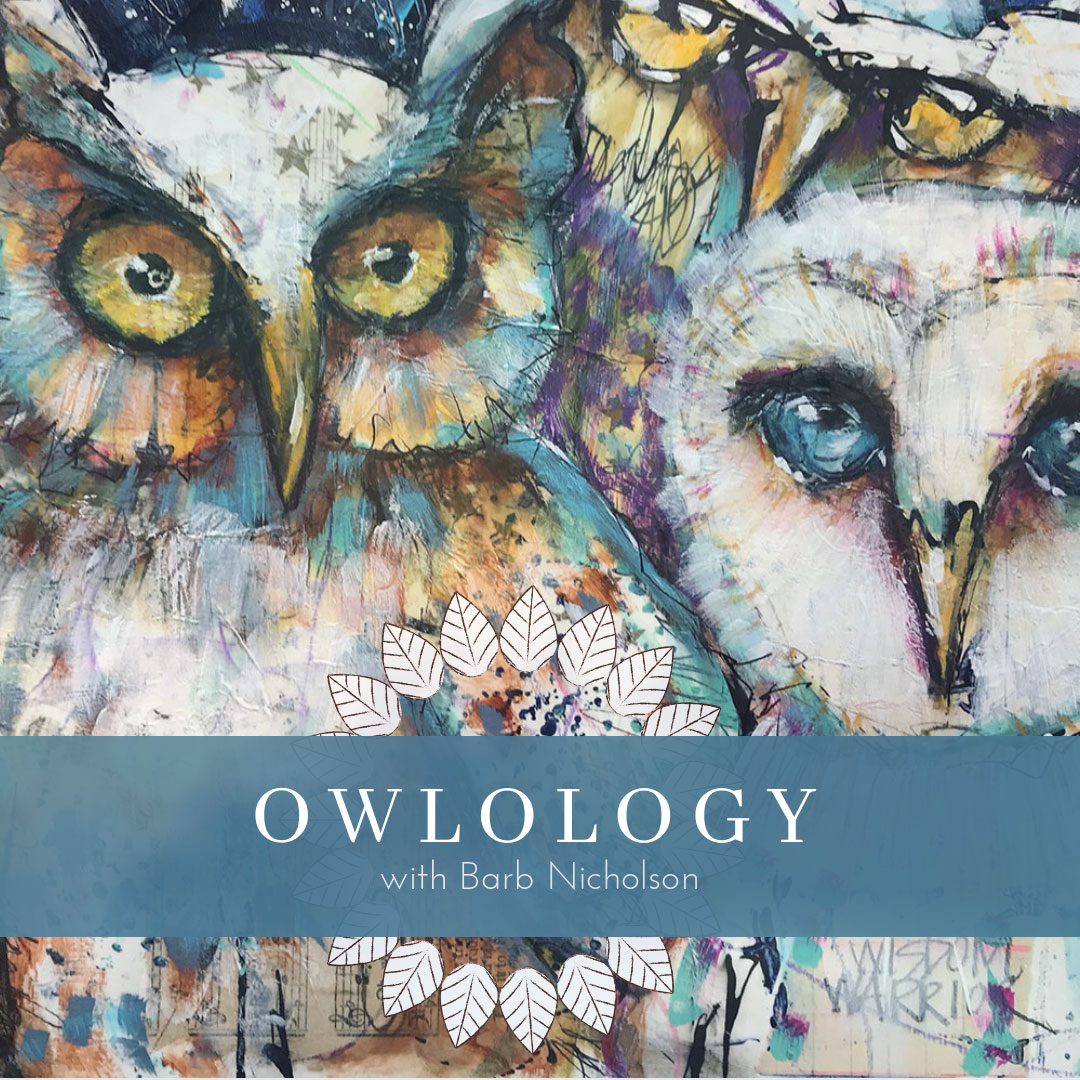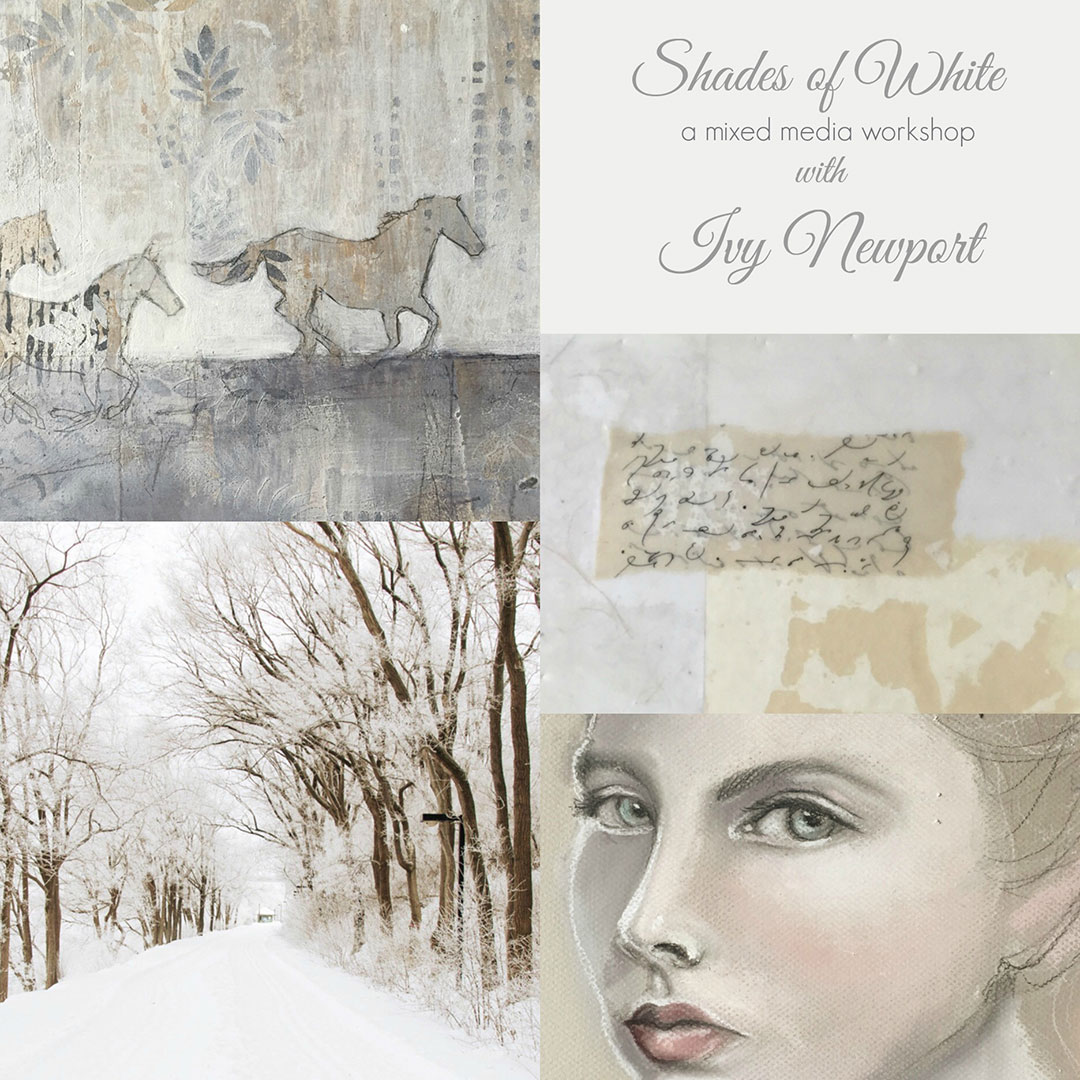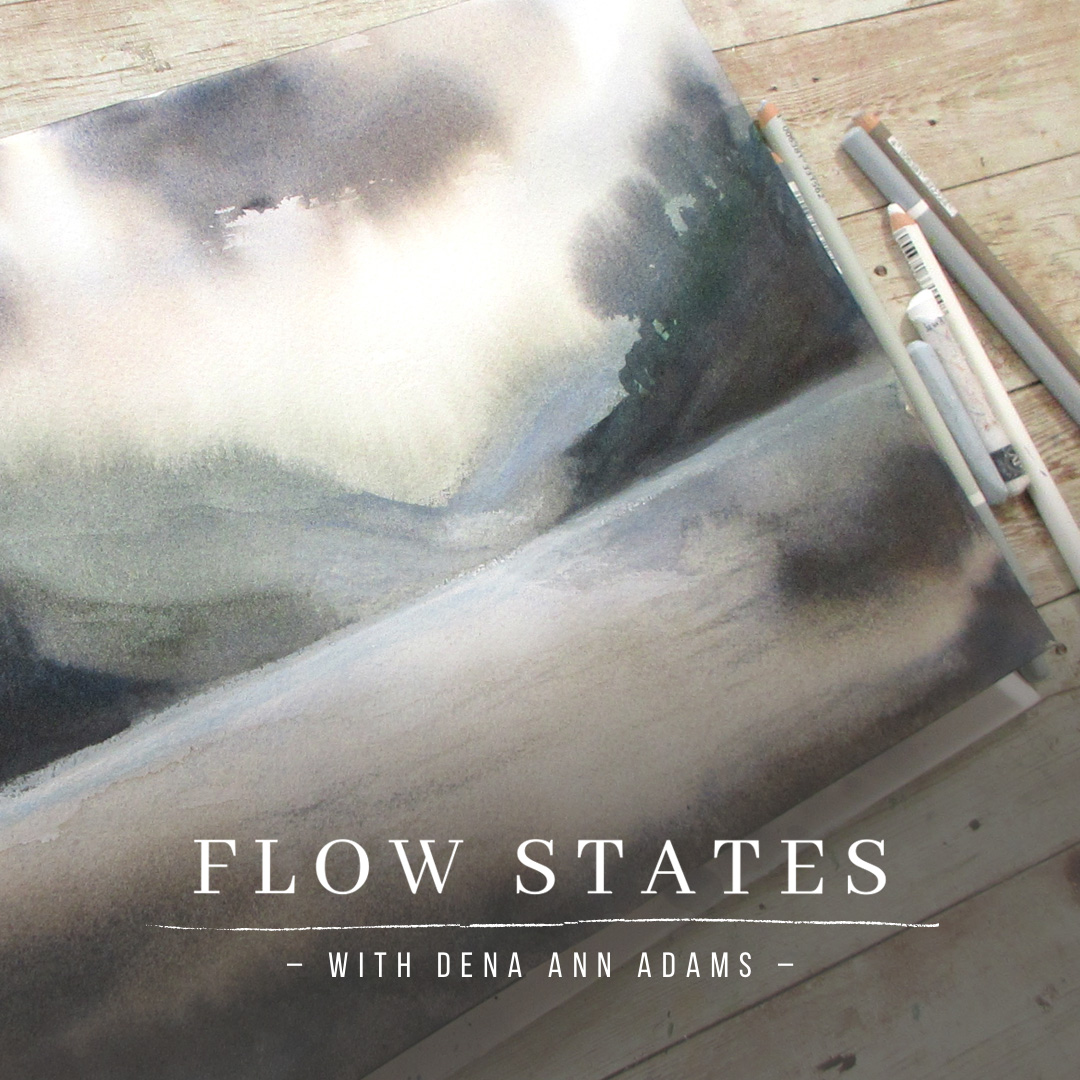IVY NEWPORT
Studioworks
Journal
a letter from ivy
Dear creative friends,
Welcome to Issue #33 of the Studioworks Journal! As always, I’m delighted you are here with me and I’m excited to share this with you. For the next few months we are going to be taking a journey through the Element – Earth, Air, Water & Fire. Last month we focused on Earth and this month we will move into Air.
This direction occurred to me after some deep meditation and a desire to connect more intimately to our elemental creative energy. It’s so easy to forget that we are an integral part of the natural world. We are composed of these elements just as everything on the planet is, so as artists and seekers, what better way to reconnect than to dive a little deeper into each of these aspects. We will still follow a similar format which includes studying a Master Artist each month, so fear not, we will definitely be binding our creative path to our explorations as always.
So let’s begin. Let us raise our eyes to the sky, feel the breeze on our faces and breathe deeply as we explore the element of Air.
xo,

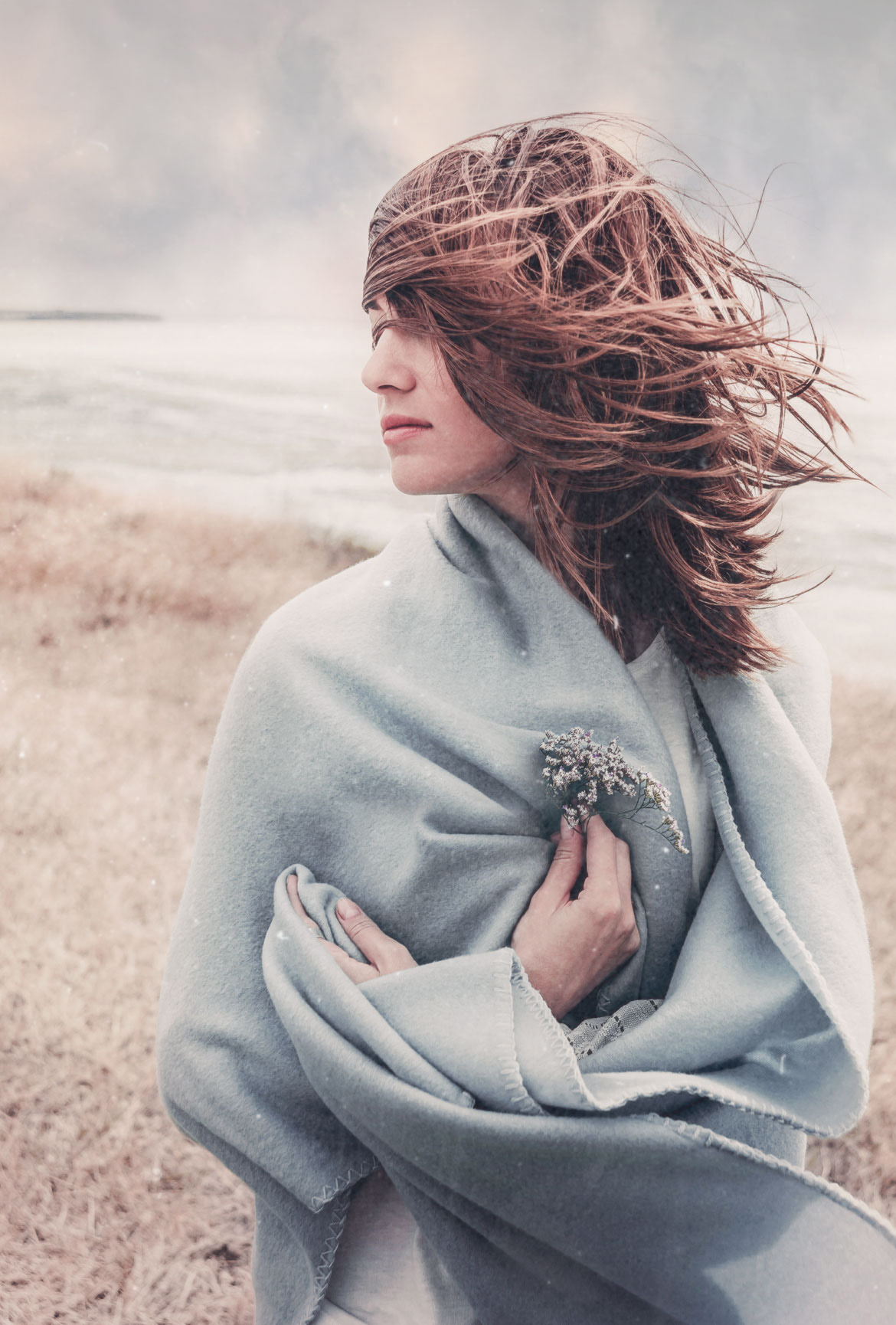
Each issue will invite you to explore your creative practice in whichever way works for you. Experience each issue at your own pace. Take what resonates with you and put the rest aside for another time.
Grab a cup of something lovely and dive in.
in this issue…
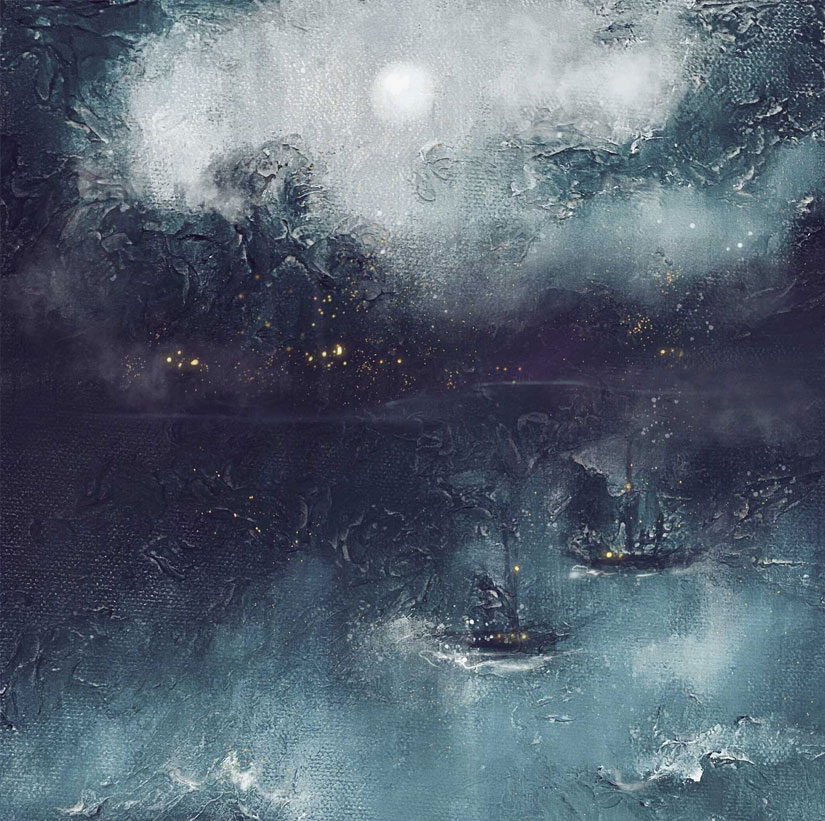
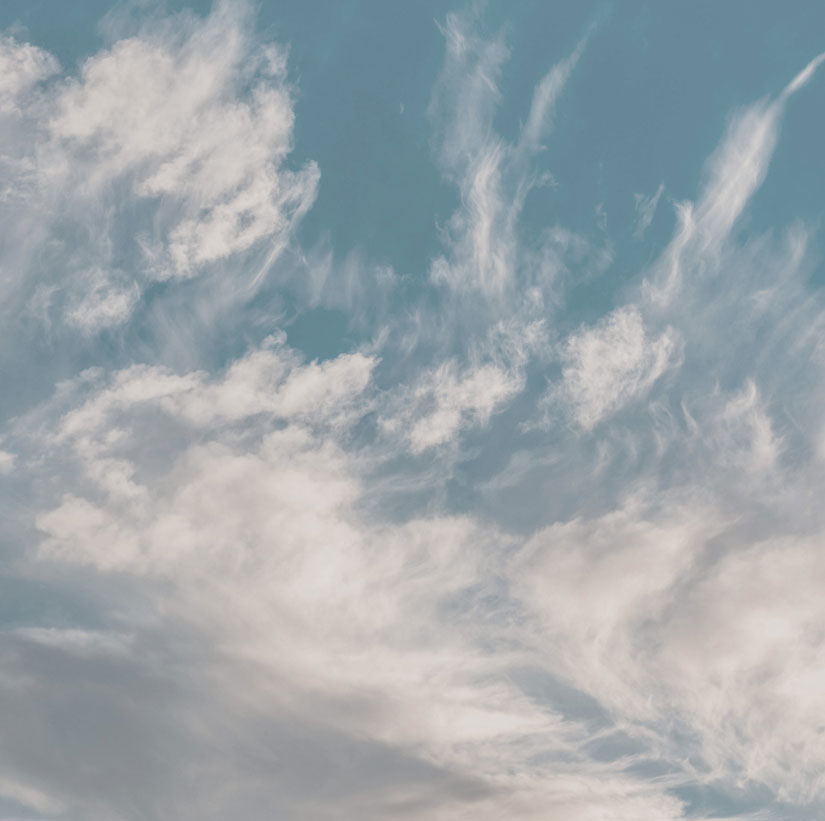
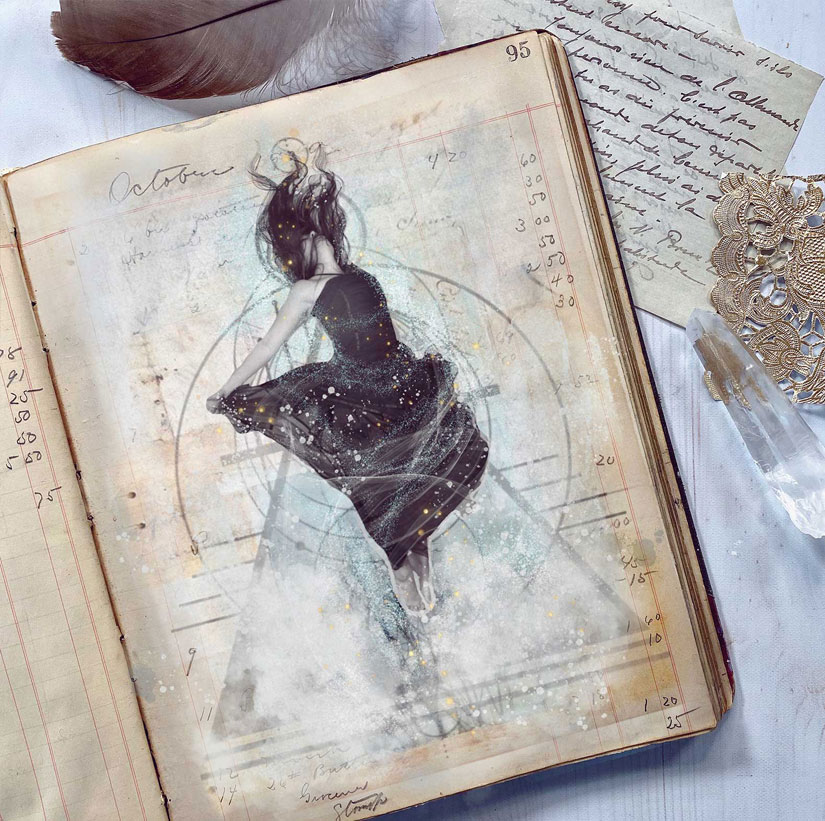
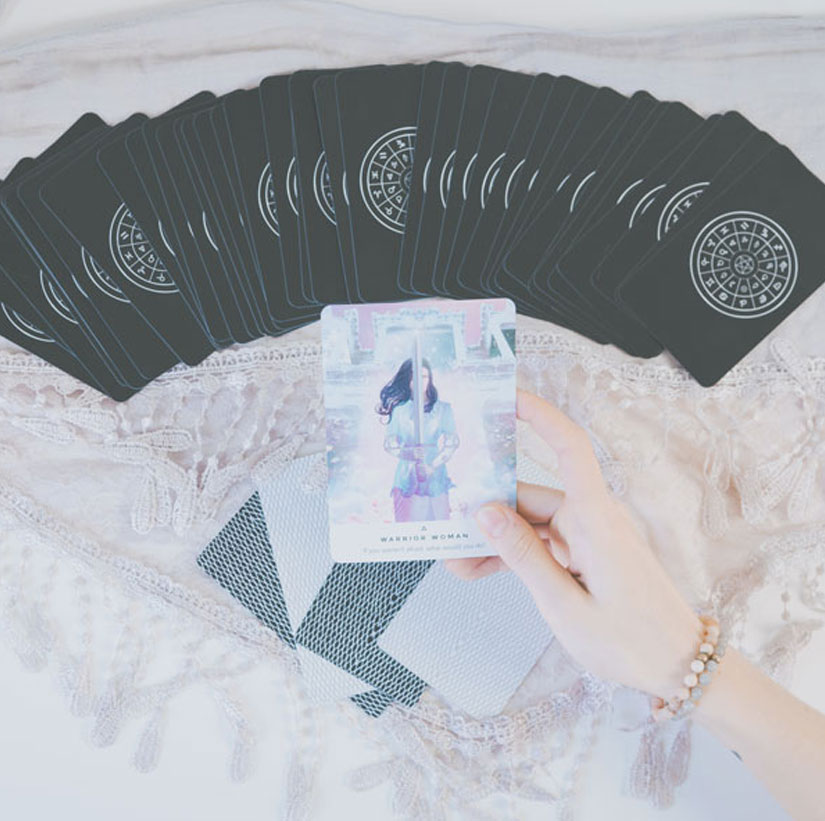
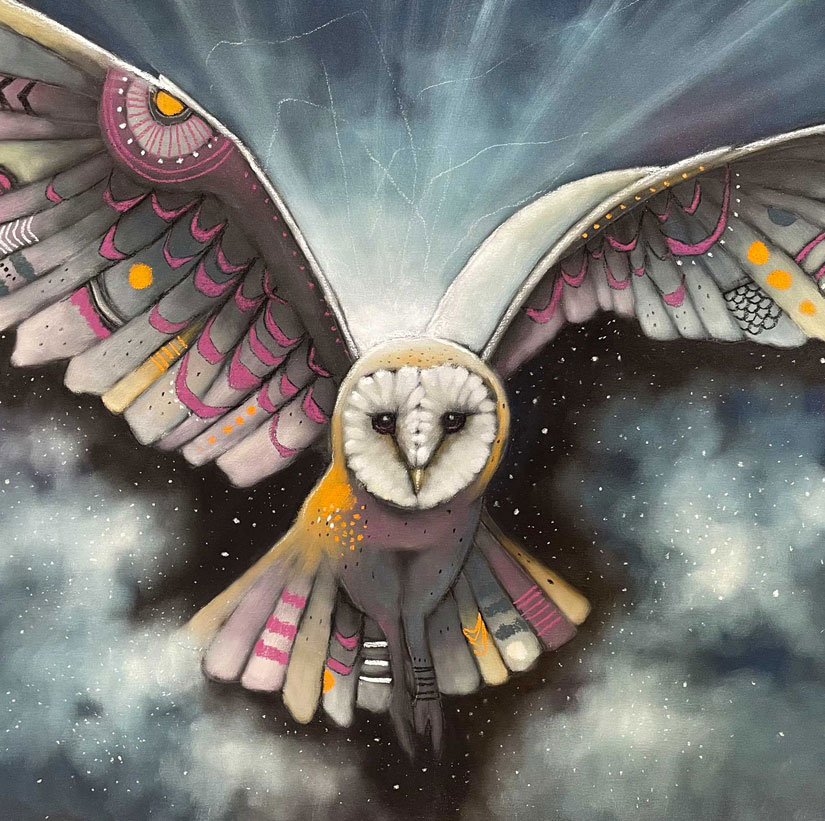
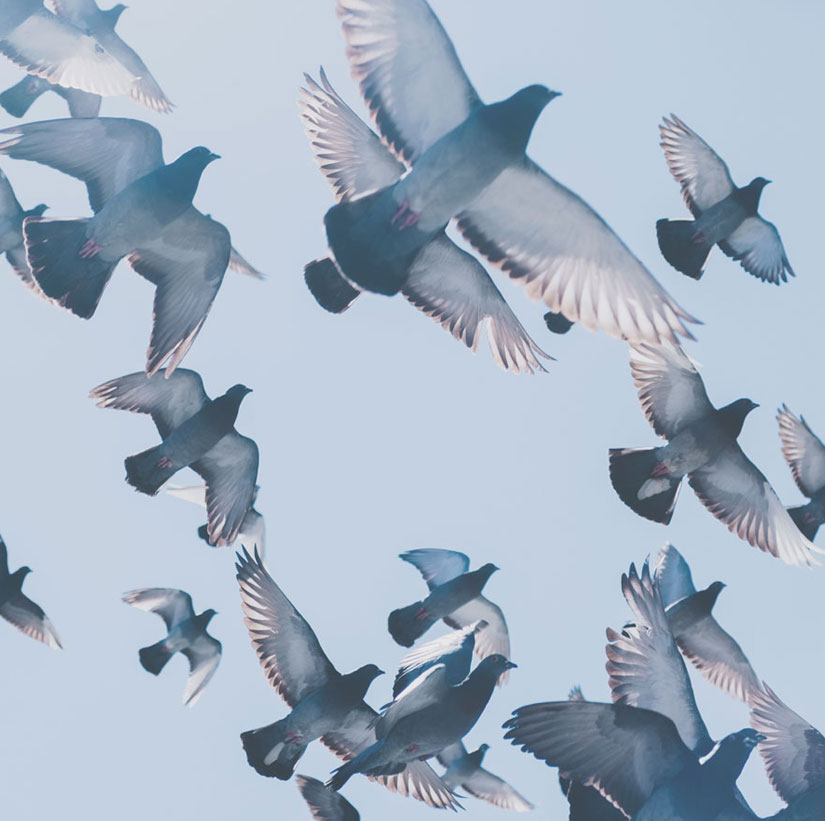
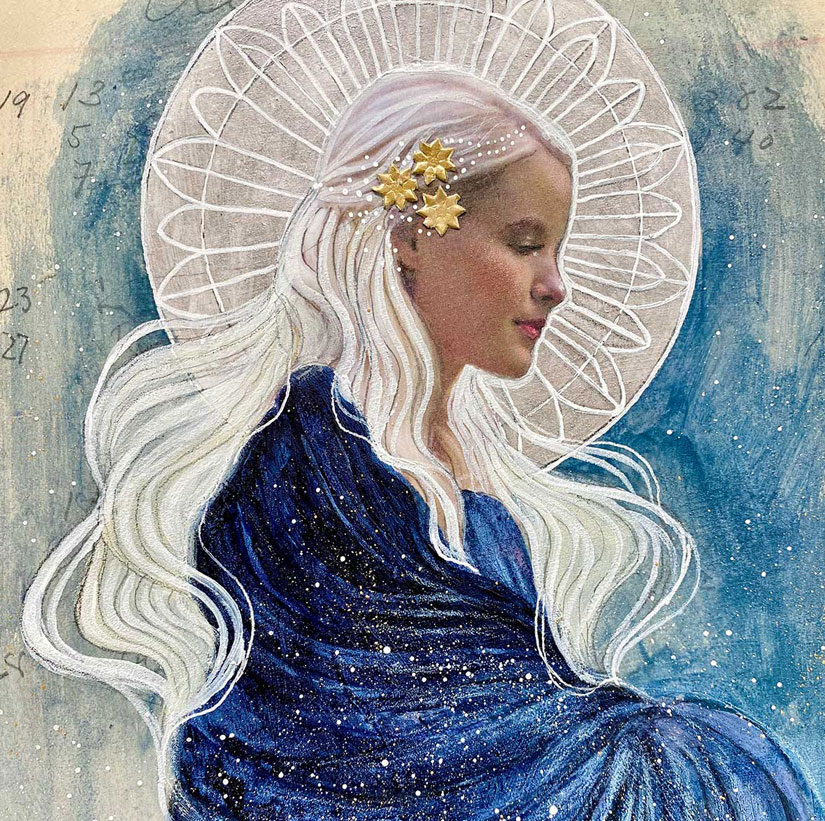

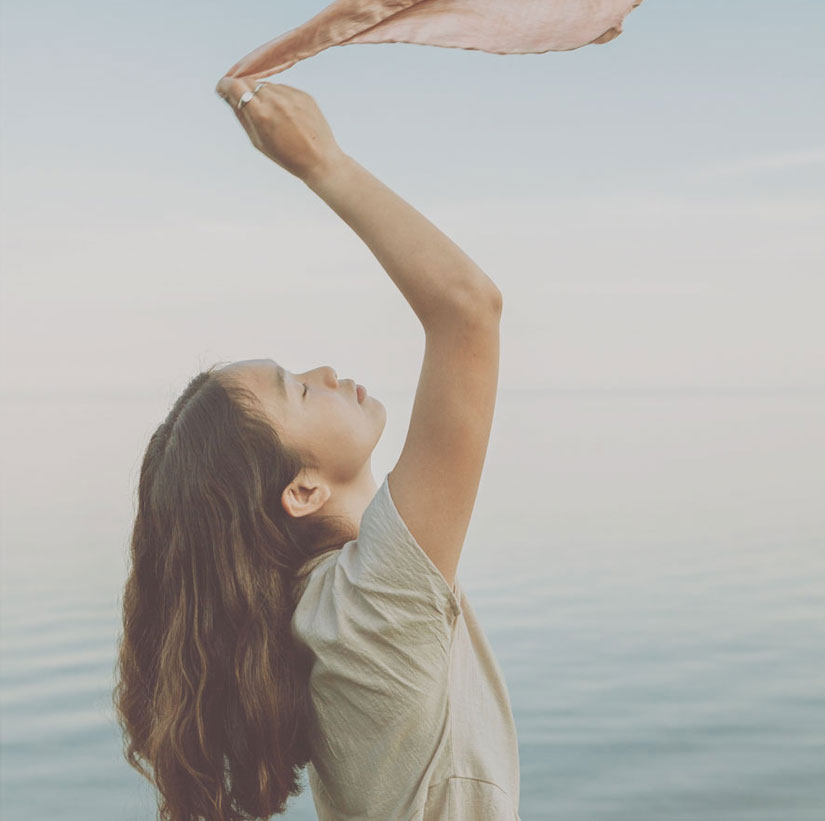
MONTHLY THEME
Air’s Invitation
When we think of the Air element one often will look above, into the heavens. Why? Well…I think it’s because it is the most intangible element and yet it seems to expand as far as the sky. All at once invisible but yet completely enfolding us. Our breath, the breeze, a gust of wind, a sigh…these are all Air. Just as tangible and binding as Earth is, the Air element lifts us, animates us and brings us consciousness and change.
When we look up at the sky, we understand our smallness but yet our greatness. Our infinite creative energy, like the far reaching horizon. Boundless and limitless. The sky reminds us of our connection to Source energy, to the Divine. The stars twinkle from their distant realms, yet we feel connected to them. The clouds shape shift like our inner thoughts and our unformed dreams. Ideas and inspiration spring forth from the Air element. Whispers from our souls, deep breathes and sudden sparks of intuition. Air initiates movement, like the wind against the chimes, like the ruffling of the leaves in the tree. Air invites us to move with it, embracing change and evolution, rising ever higher.
So let’s take a deeper look at some of the ways Air can help us creatives…
“Only from the heart can you touch the sky.”
– Rumi
4 Creative Lessons from the Air Element – Musings of the Sky
1. CONNECT WITH SOURCE
Whatever your belief system or spiritual practice, the Sky reminds us of our connection with Source. You may call that God, Goddess, Universe. Regardless of what you call it, across the world, spanning cultures, when we think of the Divine we look upwards. When we seek hope, answers, inspiration or reassurance we naturally look to the heavens. For the Artist, this is no different. We can gain so much inspiration, calm and comfort by looking up at the sky. Watch the ever shifting colors, the sparkling stars, the rising sun…these connect us to the element of Air and the incredible abundance of Source energy. Remember that you are not alone on this journey. You are being held and the Universe wants you to flourish. When you feel separation, look to the sky and connect with the collective creative Source that we are all a part of.
“Only from the heart can you touch the sky.”
– Rumi

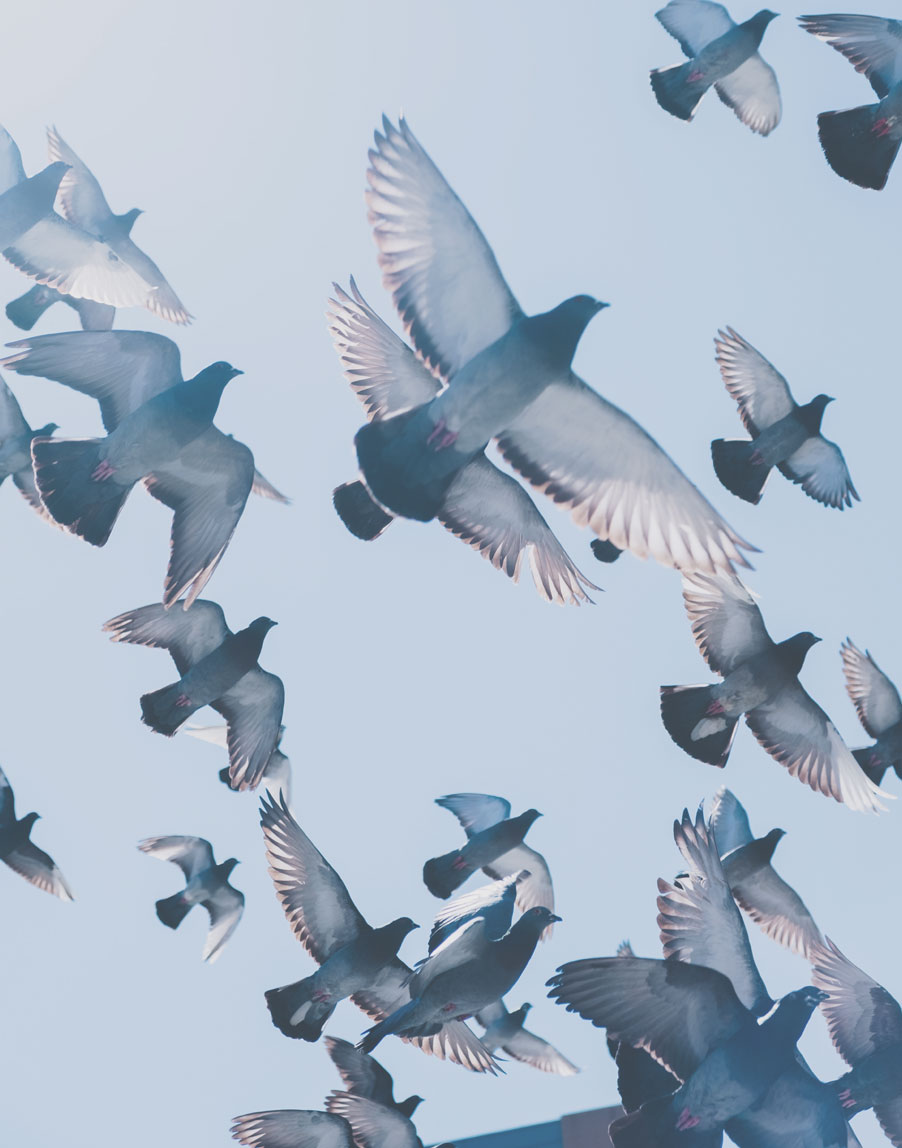
2. SHIFT YOUR PERSPECTIVE
So often we get stuck looking too closely at our work or we get caught in a rut in our creative life. The Sky reminds us to pull back. Get a new perspective. Fly above it. Look down upon it. What new ways can you interact with your artwork OR what thoughts (governed by the Air Element) can you shift? Can you get a birds eye view of what is challenging you? Disarming your emotions or stubborn blocks and instead witnessing them from afar. The Air element wants you to let what isn’t serving you be swept up in the wind…allow yourself to unclench your fists and let go of crippling thoughts or patterns. Let the Air swirl around you, lift you up high above the obstacles and see a new path on the horizon.
3. WATCH THE CLOUDS
Remember lying on your back and watching the clouds when you were a child? Watching the clouds form all sorts of shapes, dancing in their slow procession across the sky. The Air element invites us to do the same thing with our thoughts and emotions. Unbind ourselves from these passing energies. Become a witness to your thoughts and feelings, this is not to dismiss them, but rather witness them with deep compassion and the comforting knowledge that we are NOT our thoughts and emotions. Yes, they are valid and they are real but they do not define us and if we allow them to pass, just like the clouds, we can move through our creative lives with more grace and more peace. The next time strong thoughts and emotions arise in your being. Breathe deeply. Close your eyes. Say, “I see you, emotions. I feel you. I witness you. I am ok. I am open to allowing these feelings to move through me but I know I am not my feelings.” This kind of intentional Air inspired dialogue can work wonders when we get flooded with self-doubt when we are making art.
4. DAYDREAM & STARGAZE
I don’t know about you guys, but often when I allow my imagination to wander, I look to the sky. Day or night, my eyes drift to the heavens. Looking up into that great expanse, it feels as though anything is possible. Ideas fall down like raindrops, or sun rays or shooting stars. When we take moments to dream like this, to wonder and imagine, we can be filled with such incredible insight and ideas! So yes, take time out of your day to go look up at the sky and daydream or stargaze! Children do this naturally, adults, not so much! So go on, indulge your inner child, your playful inner artist and go gaze up at the sky. The Air element is the realm of the Imagination so this month, (and beyond) encourage that intrinsic gift of all humans…set your Imagination free! Doodle, draw, dream, write and capture, with your butterfly net, all the beautiful gems your Imagination has for you!
Air's Invitation
I love this poem by Danna Faulds. It reminds us of the simple yet powerful way that the Air Element moves through us – our breath! Enjoy this beautiful poem.
Breath of Life
I breathe in All That Is-
Awareness expanding
to take everything in,
as if my heart beats
the world into being.
From the unnamed vastness beneath the mind,
I breathe my way into wholeness and healing.
Inhalation. Exhalation.
Each Breath a “yes,”
and a letting go, a journey, and a coming home.
-Danna Faulds
This poem is from Danna’s book, Going In and In…
Breath of Life
CREATIVE INTUITION
with Elizabeth Cooper
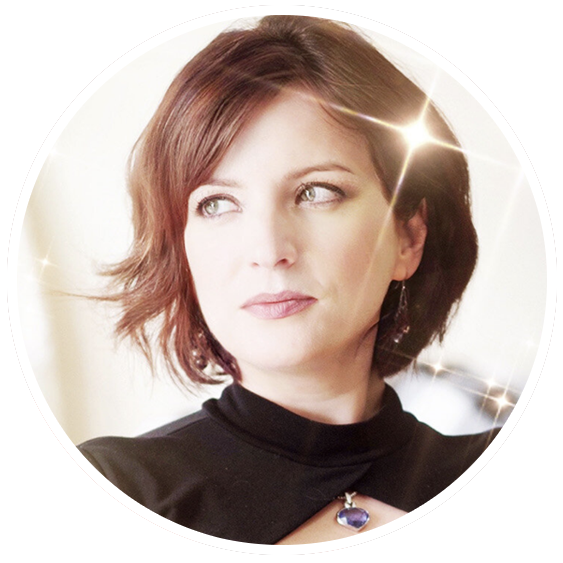
I’m excited to announce that my dear friend and fellow artist will be a regular contributor to the Studioworks Journal! She is my go-to when learning more about my intuition and integrating it into my creative practice. This month she’s going to guide us through the Air suit of the Tarot – The Swords. Enjoy as she reveals the symbols, stories and significance of this powerful suit.
The Air Element in Tarot: An Artist’s Guide
Heightened reasoning abilities, sage intellect, and plenty of fresh ideas.
That’s what you can expect when you welcome the element of air into your spiritual practice.
Last month, we explored the suit of pentacles and its connection to the element of earth. We talked about tapping into wealth and prosperity and imbuing your spiritual art practice with a rich sense of practical abundance.
In this follow-up article, we’re going to take an in-depth look at the element of air and its connection to the suit of swords in tarot.
At its most basic level, air is the foundation for all life on Earth. It is the principle of all existence. Without air, we wouldn’t exist.
Air can be refreshing and cleansing, yet it can also be destructive. Without warning, it can go from an unnoticed current to a gentle breeze or a fierce windstorm.
It can feed fire and carry water. It’s in constant movement, rising when hot. It’s intangible, unseen and mostly unnoticed, yet absolutely vital to sustaining life.
Our speech requires breath, which demands air. The sounds we make must have air to reach the listener’s ear.
Air is all around us. It’s expressive and expansive, untameable and eternally free. It’s also an excellent metaphor for spiritual faith. It reminds us that we don’t have to see something to believe it exists.
The Air in Tarot
Tarot takes the immense unseen power of air and connects it to something equally formidable: the force of our thinking mind.
The cards represented by the suit of swords bring to life the lessons inherent in everything that happens inside our minds. Many of the illustrations embody our beliefs, memories, ideals, dreams, and the stories we tell ourselves. They characterize the mental level of consciousness that makes us thinking, reasoning beings.
Descartes once said, “Cogito ergo sum” – I think, therefore I am. As humans, we’re unable to separate our thinking minds from our own existence. When thought ceases, so do we. When air vanishes, so do we. As such, the thought/air connection is a powerful reminder of physical need and consciousness, of both solid formation and abstraction.
As artists, we’re often in our heads. We have doubts, fears, and worries. Questions like, “am I good enough?” often plague us. The swords cards are masterful at presenting us with our own limiting beliefs, so we can confront them and cut through the confusion, lies, and assumptions we’ve made.
Swords are double-edged. They can help us express ourselves clearly, defend our most valued ideals, and stand up for ourselves. Yet, they can be used to hurt just as quickly.
Air Elemental Correspondences
Suit: Swords (aka: blades, arrows, spades, daggers, knives).
Court cards: Kings (aka: fathers, mentors, elders, speakers).
Major arcana: The Fool, The Magician, The Lovers, Justice, The Star
Astrological signs: Aquarius, Gemini, Libra
Attributes: Masculine, projective.
Direction: East.
Season: Spring.
Sense: Smell.
Statement: “I think…”
Colors: Yellow, white.
The Artist as an Air Elemental
For your artist self, the element of air represents your artistic dreams, your goals for your art practice, as well as your identity as a creative being. It also reflects your doubts, fears, and your relationship with your inner critic.
When you’re focused on what’s going on in your mind, you need to be aware of how you speak to yourself and your inner artist. You may find you utter words in the privacy of your own mind that you’d never say aloud to another person — and those “swords” are the ones that cut deepest. You’ve no doubt heard the phrase, “death by a thousand cuts.” Each time you criticize, chastise, or belittle your artistic dreams, you make another little cut, further limiting your inner artist’s ability to express herself freely.
Yes, you’ll need to use your thoughts, intellect, and inner wisdom to make your art. Welcoming in the energy of air means allowing dynamic ideas, witty conversation, and intelligent problem-solving to come to light. But if that energy is taken too far, it can quickly turn into the fuel that feeds the inner critic its cold-hearted, distant, and unsympathetic statements.
Knowing this, I’d like to invite you to go a little deeper into your elemental nature.
Imagine the many ways you, as an artist, embody the aspects of the element of air. Ask yourself questions such as:
- Do I enjoy planning my art in advance, using reason and logic?
- Is the voice of my inner critic loud and insistent?
- Do I often struggle with thoughts of not being a good enough artist?
- Do I like to think through the messages I express through my art?
- Does my art serve a deep need to communicate my thoughts?
- Is my art a direct reflection of my dreams?
If the answer to most of those questions is ‘yes,’ then I encourage you to lean into your airy nature.
Connecting to the Element
The best way to connect to an element is to observe it in its natural form. Here are just a few ideas to help you get in touch with the essence of air:
- Practice yoga, paying close attention to your breath.
- Speak to others, connecting through communication.
- Clean out the clutter in your studio, making space for fresh air to circulate.
- Stand in a high place (mountain, hill, rooftop) and feel the wind.
- Twirl, feeling the air rush around you.
- Light incense, watching the smoke shape itself through the air.
- Diffuse essential oils, watching the mist vanish into the air.
- Breathe deeply, inhaling the fragrance of flowers or herbs.
- Meditate, focusing on the breath and allowing yourself to become the watcher of your thoughts.
- Go cloud watching and look for messages in the shapes.
After trying any of the suggestions above, pull out all the suits of swords cards in your deck and lay them out in front of you. Then, take note of the air symbolism in each card.
What do you notice now? Is a strong wind represented by a cyclone? Are the clouds fluffy and still? What color is the storm? How will you interpret the thoughts you have about yourself as an artist through the lens of movement, freedom, and unrestricted potential?
Make a note of any new insights. Your understanding of both the suit of swords and the element of air will expand as you open yourself to the spiritual guidance you receive through your art practice.
I’ll see you back here next month as we explore another element.
Elizabeth Cooper is an artist and holistic coach specializing in helping frustrated creatives identify, develop and showcase their signature body of work. Learn more about her via her website: www.flutterandsprout.com
“On a day when the wind is perfect, the sail just needs to open and the world is full of beauty. Today is such a day.”
– Rumi
Air Artist PROMPT:
- Can you capture the essence of the wind in a painting? Can you draw a breeze? Can you paint the ever changing sky? Try to. See what happens. What emerges on the paper? Enjoy the mystery in this kind of creative prompt.
WORD OF THE MONTH
Breath
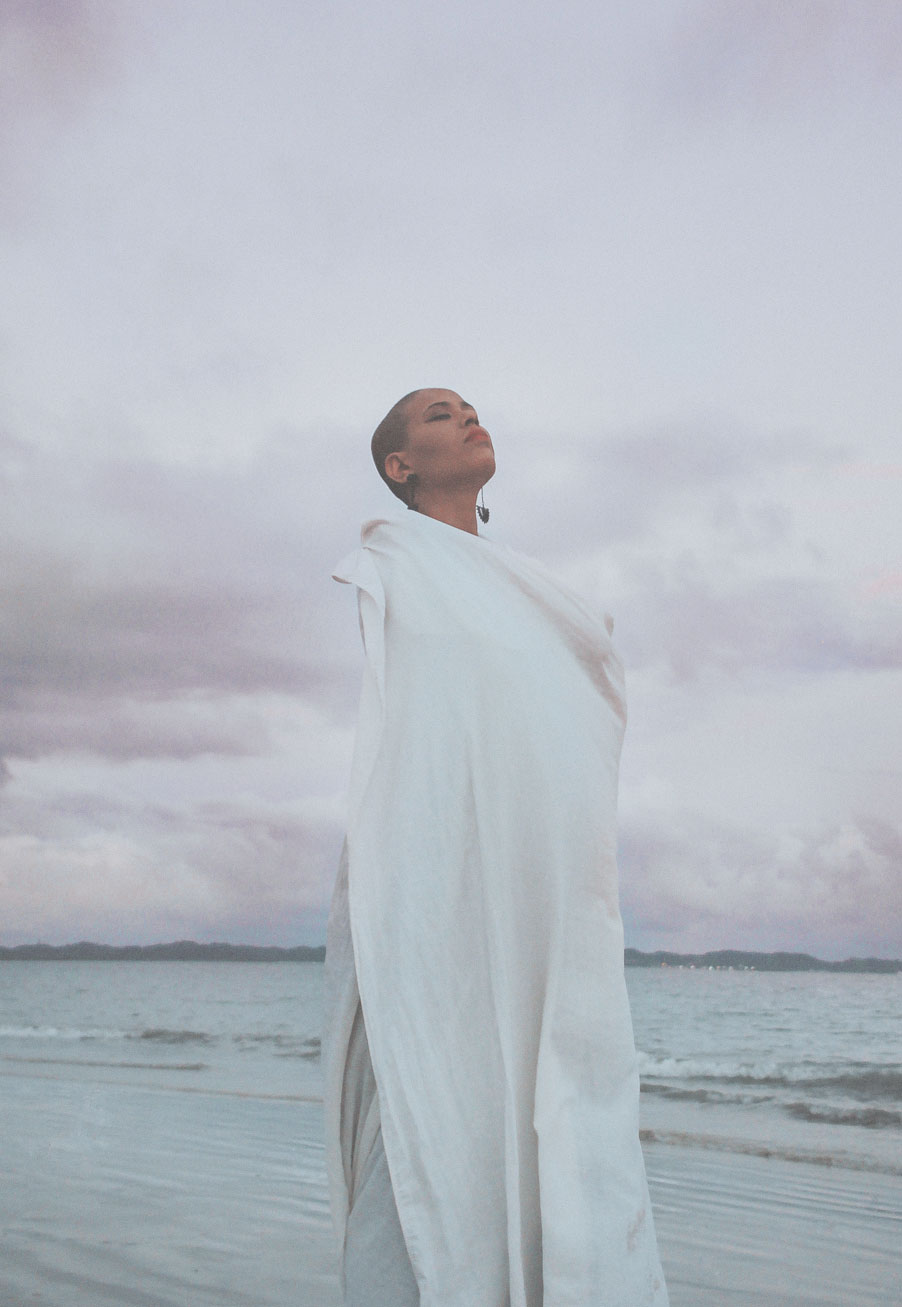
DEFINITION – BREATH
The act of breathing, inhaling and exhaling. Life force and animator of life.
We take our breath for granted. I mean, we really do. Go ahead and take a deep belly breath and slowly exhale. What a divine gift. What a delicious experience. This month, as we connect with the Air Element lets pay special attention to our breath.
It is absolutely proven that breath work can altar our state of being. From anxious we can become calm. From fearful we can become peaceful. From angry we can shift toward compassion. Breath facilitates this all.
When we sit at our easel and feel the fear of beginning a new piece, we can use our breath to still our minds. We can use our breath to open our hearts. Our breath is the gateway to the deeper layers of ourselves, where the soul speaks and our muse resides.
4 – 7 – 8 BREATHING
Have you ever heard of 4-7-8 breathing? The 4-7-8 breathing technique, also known as “relaxing breath,” involves breathing in for 4 seconds, holding the breath for 7 seconds, and exhaling for 8 seconds. This breathing pattern aims to reduce anxiety which can provide immense relief when facing a new creative challenge or experience!
Let’s try it…
Before starting the breathing pattern, adopt a comfortable sitting position and place the tip of the tongue on the tissue right behind the top front teeth.
To use the 4-7-8 technique, focus on the following breathing pattern:
- empty the lungs of air
- breathe in quietly through the nose for 4 seconds
- hold the breath for a count of 7 seconds
- exhale forcefully through the mouth, pursing the lips and making a “whoosh” sound, for 8 seconds
- repeat the cycle up to 4 times
Now check in and see how you are feeling. Do you feel more relaxed? More open? Softer? Good, this is the perfect place to begin creating from!
Want to see a video on how to do this breath – check this one out via Dr. Weil –
“Take a deep breath. Inhale peace. Exhale happiness.”
– A.D. Posey
Word of the Month - Breath
Writing Prompt & Card Spread
Connecting to the Air element
As we learned with Elizabeth Cooper, the Air element in Tarot relates to the Swords, which governs our thoughts, logical thinking, wisdom and knowledge. So let’s do a card spread and or some journal writing to reflect and connect with this element.
(Remember if you don’t choose to use oracle or Tarot cards then use the questions as journal prompts to further support your connection with your creative self.)
Air welcomes us to ponder, consider and also to let go of thoughts. Air welcomes change, action and evolution. In our creative life, we know that it is pretty easy to get caught up in our heads. Swirling ideas, a bursting imagination and plenty of doubt, frustration and anxiety to boot! Yes- an Artist’s mind is a busy place! However, through intention and reflection we can sort through our thoughts and extract the inherent wisdom and intuition that Air gifts us.
I’ve chosen 4 cards for this spread. Like the four directions of the winds.
1. What thoughts are causing my creative energy to be blocked or drained?
2. What action can I take to help release this thought pattern?
3. How can I look at this situation with a new perspective?
4. What could arise once I let go of these thoughts?
Writing Prompt & Card Spread
Starlight Meditation for Relaxation
WITH RACHEL HILLARY
This beautiful, soothing meditation connects us to the peaceful light of the stars and wisdom of the sky. Give yourself the gift of 20 minutes to enjoy this beautiful journey. This is an excellent meditation to do at the end of the day or before beginning some artwork.
Rachel will share a little about this experience –
This is a short and simple guided visualisation meditation that I created for a Meditation Teacher course I have recently been a part of. It is designed to be appropriate for beginners to all levels of meditation experience. You are guided to visualise and sense a beautiful light like a star above your head, and this light energy works with you to cleanse, to clear, to refresh your being in its entirety. I hope you enjoy!
xo,
Rachel
Starlight Meditation for Relaxation
You can download more meditations and connect with Rachel here…
Monthly Affirmation
ELEMENTAL MYTHOLOGY
I don’t know about you but mythology has always been an inspiration to my work, so as we move through the Elements I thought it would be fun to explore a few of the associated Elemental Goddesses across cultures. Air, as you can imagine, has MANY deities but I am especially drawn to Arianrhod – the Celtic Sky Goddess
Arianrhod
Arianrhod is a Sky or Moon Goddess. She is the epitome of feminine celestial power who rules over fertility, childbirth and reincarnation. She is the most powerful child of Don, the primeval Mothergoddess, a parallel to the Irish Dana or Danu, and was described as very pale and very beautiful. She is a Virgin Goddess, but not in the Christian or modern meaning of the word, but in the original ancient one. She was a woman all unto herself, independent, who doesn’t need protection from a man.
Arianrhod is the Goddess of the Silver Wheel and thus associated with spinning and weaving, weaving the tapestry of life itself, as she also rules arts, magic, and manifestation, the fundamentals of the conscious creation of life and its ongoing flow and change of events.
Her palace was found in the far north on the magical, rotating island of Caer Sidi, which probably means “Revolving Castle”. She lived there with her female attendants. The ancients believed that her domain and her castle, Caer Arianrhod, were in the Corona Borealis, the constellation of stars moving around the apparently motionless North Star. Legend tells us that poets and astrologers learned the wisdom of the stars at Caer Sidi.
As “Silver Wheel”, Arianrhod was responsible for the souls of warriors who fell in battle. She gathered them aboard her ship, the Oar Wheel. and transported them to Emania, also know as Moonland. In the Northern sky, whirling around the enduring stability of the north star, Arianrhod presided over the fates of departed souls, nurturing their journeys between lives.
Things sacred to Arianrhod are the owl, wolf and the birch tree. The owl has long been associated with death whereas the birch tree is the tree of new beginnings. To the Celts, the wolf was associated with the power of the moon.
Symbols: the silver wheel, the owl, the moon
Colors: Blue, purple, grey, silver, white.
Crystals & Gems: calcite, moonstone, aquamarine, selenite, celestite, amethyst
Plants : birch, ivy, lavender, rosemary
Corresponding Tarot Cards for ARIANRHOD
THE STAR
The Star is the eighteenth card in the Tarot Deck. It is given the number 17 because the very first card (The Fool) is given the number 0. The Star represents Hope, Optimism, Healing, Good Times ahead, Miracles, Unconditional Self Love and Wishes coming true.
Symbology of the Star-
We see a naked woman half kneeling. One foot rests above the water. She holds two water containers and she pours water onto the pond and the land. Above her is a huge golden star and around are 7 smaller stars. Behind the women is a tree with a bird sitting in it – the Ibis bird.
Woman – This woman represents hope. She seems graceful and serene yet focused.
Body Posture of Woman – The women is naked. The Queen of Heaven was often seen as naked. Being naked is being real – no pretense.
Facial Expression of Woman – The woman is focused 100% on what is doing. She is in the moment. She watches how the water pours into the pond, representing the unconscious. She is aware of her unconscious but she is not deep within it. In fact, her right foot is above the water.
Water – Pond – The water in the pond represents the unconscious. The watery depths of our being. The woman has her foot resting on the water which is a physical impossibility. Why is this? Perhaps it is indicating that to have hope means rising above the mire of emotions and fears that the unconscious can hold.
Water – Small Streams – The water poured from the jugs flows over the green fertile land. 5 streams run from the poured water. Some water returns to the pond to show the unconscious is fed by the flow just as much as the conscious (land).
Stars in Sky – The gold star represents hope. It has 8 points. The Babylonians believed that their queen of heaven goddess Ishtar was represented by an octagram and she ruled over the planet Venus. The word star may come from the word Ishtar. The 7 smaller white stars represent the 7 chackras, the 7 visible planets in the sky and the 7 metals of alchemy. 7 is a sacred number in many traditions and religions, past and present.
The Ibis Bird – The bird is an Ibis which, in Egyptian mythology represents Thoth and Hermes – the wisdom carriers.
Message of the Star
The Star is telling you that after the upheavals of The Tower there is calm and peace. You may have gone through a hard time but this card is saying the hard time are over. Now is the time of gentle healing, hope and love. Now you can hope for better times and a more bright future. If you are currently going through a card time then this card is fortuitous because it means good luck is coming your way.
Other Sky/Air goddesses across cultures include:
Greek- Hera, Iris, Selene, Nyx
Ancient Egyptian – Nut, Hathor
Roman – Juno
Chinese- Chang’e
Lakota – Hanwi
Pacific Islands – Ira
Bonus study
Take a peek at your own ancestry. Is there an Air/Sky Goddess you can connect with aligned with your culture or family lineage? Can you create something dedicated to this deity? So interesting to explore…
I am Arianrhod, mother of wind and skies
I am Arianrhod and The stars and moon are mine
My home is found beyond the northerly winds .and.
I am the storm that whirls and the calm inside its eye.
I am Arianrhod, Lady of The Silver Wheel
I am Arianrhod, I bring darkness, cold and death.
I am the guardian of the past, the present and the future life.
I am the Silver Threads of the Rays of the Light.
– Trobar de Morte
See beautiful artwork dedicated to Arianrhod here –
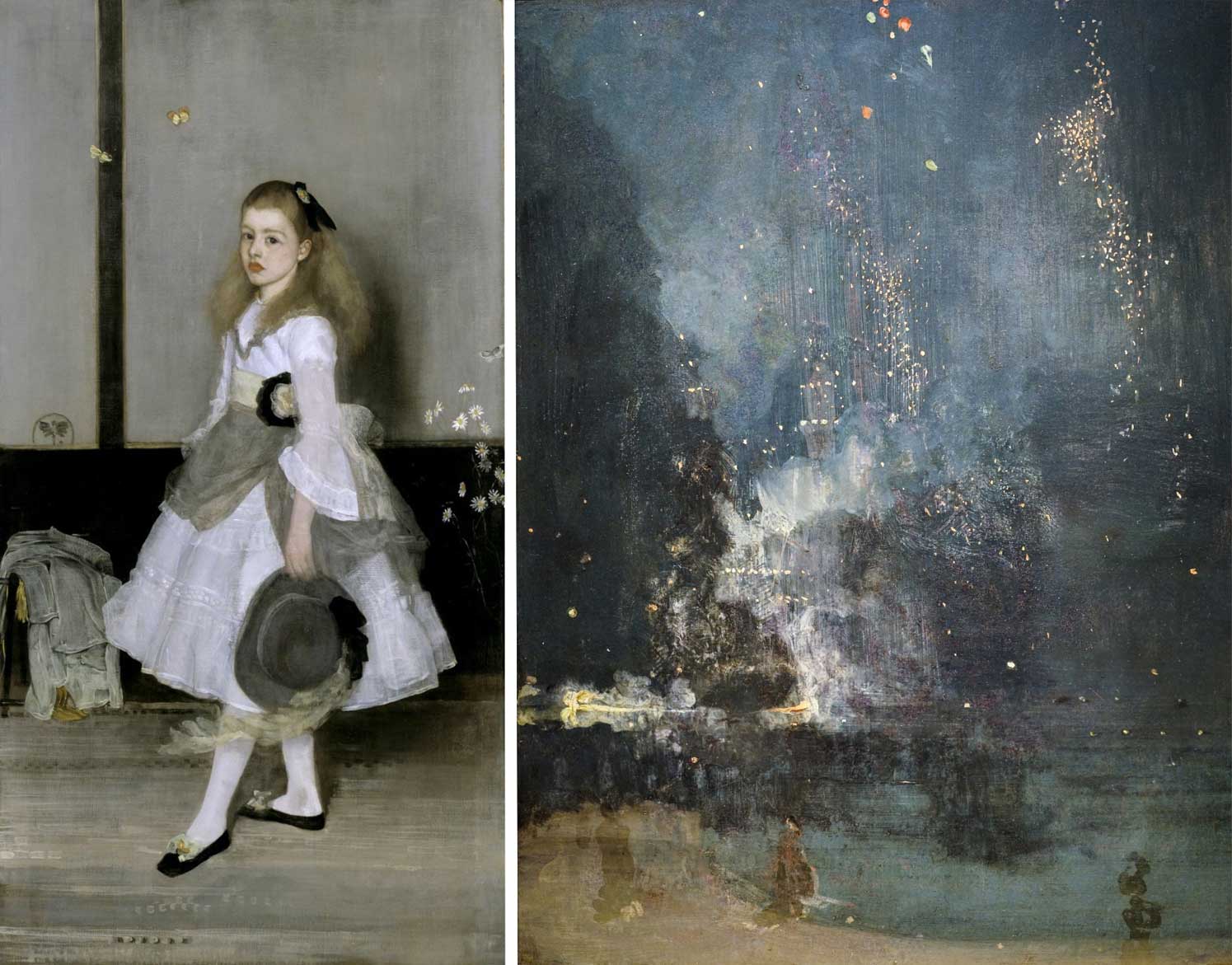
Color Palette of the Month
This month, I couldn’t help but be inspired by our Master Artist – James McNeill Whistler. Whistler is a master of light and dark, and when I think of the Air Element and all it encompasses, I feel an exploration of these contrasts is especially applicable.
We see Whistler capture stark black figures against even blacker backgrounds, women dressed in infinite shades of white, ensconced in cream and gray and then in his landscapes/skyscapes we see him depict a night sky filled with light. I love the sense of drama in his work. Air can be a bit dramatic, don’t you think? Peaceful breeze one moment and raging tornado the next! A soft blue sky can quickly darken with looming storm clouds. Whistler’s work has this intensity to it.
If I had to color the wind, it would be in a range of silver grays and white, if I had to capture the star lit sky it would be a range of inky blues, purples and flashes of gold and silver. So this is where we land in our color this month. As always, if you are called to explore a different palette, please feel free.

“Nature contains the elements, in color and form, of all pictures, as the keyboard contains the notes of all music. But the artists is born to pick, and choose, and group with science, these elements, that the result may be beautiful – as the musician gathers his notes, and forms his chords, until he brings forth from chaos glorious harmony”
– James Abbott McNeill Whistler
Color Palette
Air Artist PROMPT:
- Consider filling a few pages of your sketchbook with cloud studies…do these in a medium you enjoy. Can you capture the soft, ephemeral edges, the constantly shifting forms?
Master Artist Guide
James Abbott McNeill Whistler
James Abbott McNeill Whistler was born July 11, 1834 – and passed on July 17, 1903. He was an American artist active during the American Gilded Age and based primarily in the United Kingdom. He disliked sentimentality and moral allusion in painting and was a leading proponent of the credo “art for art’s sake”. His signature for his paintings took the shape of a stylized butterfly possessing a long stinger for a tail. The symbol combined both aspects of his personality: his art is marked by a subtle delicacy, while his public persona was combative. He found a parallel between painting and music, and entitled many of his paintings “arrangements”, “harmonies”, and “nocturnes”, emphasizing the primacy of tonal harmony. His most famous painting, Arrangement in Grey and Black No. 1 (1871), commonly known as Whistler’s Mother, is a revered and often parodied portrait of motherhood. Whistler influenced the art world and the broader culture of his time with his theories and his friendships with other leading artists and writers.
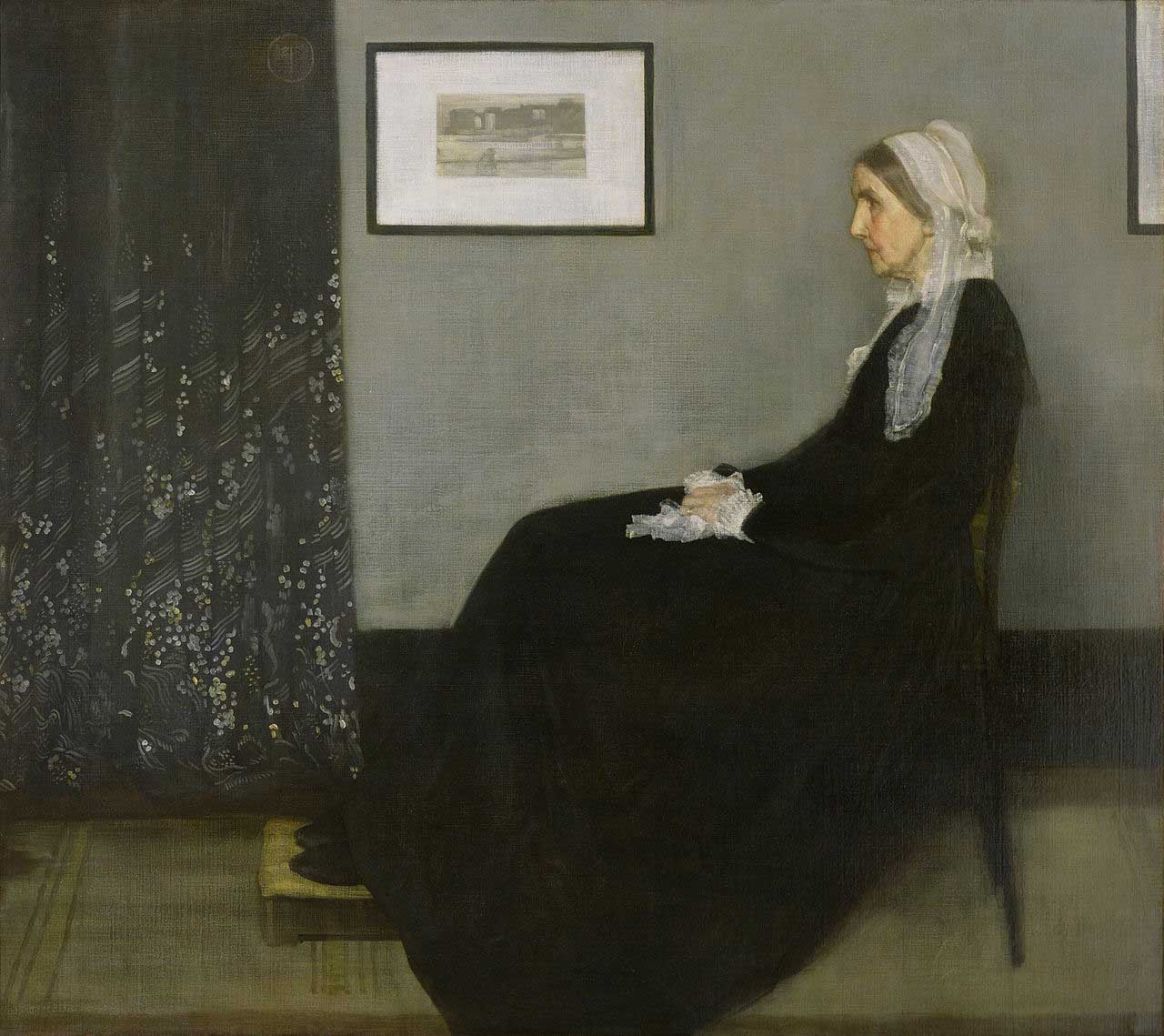
Whistler’s Mother – 1871
OVERVIEW
James Abbott McNeill Whistler was born July 11, 1834 – and passed on July 17, 1903. He was an American artist active during the American Gilded Age and based primarily in the United Kingdom. He disliked sentimentality and moral allusion in painting and was a leading proponent of the credo “art for art’s sake”. His signature for his paintings took the shape of a stylized butterfly possessing a long stinger for a tail. The symbol combined both aspects of his personality: his art is marked by a subtle delicacy, while his public persona was combative. He found a parallel between painting and music, and entitled many of his paintings “arrangements”, “harmonies”, and “nocturnes”, emphasizing the primacy of tonal harmony. His most famous painting, Arrangement in Grey and Black No. 1 (1871), commonly known as Whistler’s Mother, is a revered and often parodied portrait of motherhood. Whistler influenced the art world and the broader culture of his time with his theories and his friendships with other leading artists and writers.
Early Life
NEW ENGLAND
James Abbott Whistler was born in Lowell, Massachusetts on July 11, 1834, the first child of Anna McNeill Whistler and George Washington Whistler. His father was a railroad engineer, and Anna was his second wife. James lived the first three years of his life in a modest house at 243 Worthen Street in Lowell. The house is now the Whistler House Museum of Art, a museum dedicated to him.
The family moved from Lowell to Stonington, Connecticut in 1837, where his father worked for the Stonington Railroad. Three of the couple’s children died in infancy during this period. Their fortunes improved considerably in 1839 when his father became chief engineer for the Boston & Albany Railroad, and the family built a mansion in Springfield, Massachusetts, where the Wood Museum of History now stands. They lived in Springfield until they left the United States in late 1842. Nicholas I of Russia learned of George Whistler’s ingenuity in engineering the Boston & Albany Railroad, and he offered him a position in 1842 engineering a railroad from St. Petersburg to Moscow, and the family moved to St. Petersburg in the winter of 1842/43.
Whistler was a moody child prone to fits of temper and insolence, and he often drifted into periods of laziness after bouts of illness. His parents discovered that drawing often settled him down and helped focus his attention.
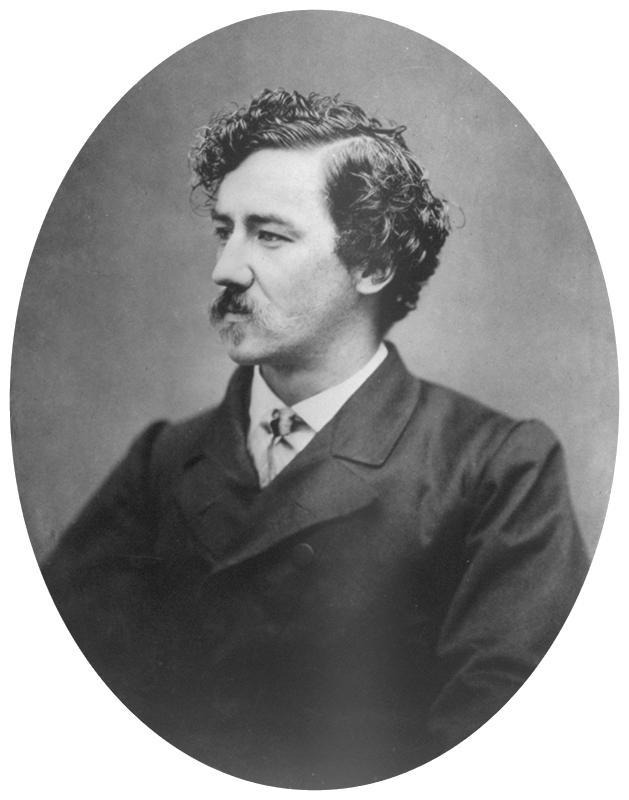
RUSSIA AND ENGLAND
Beginning in 1842, his father was employed to work on a railroad in Russia. After moving to St. Petersburg to join his father a year later, the young Whistler took private art lessons, then enrolled in the Imperial Academy of Arts at age eleven. The young artist followed the traditional curriculum of drawing from plaster casts and occasional live models, revelled in the atmosphere of art talk with older peers, and pleased his parents with a first-class mark in anatomy. In 1844, he met the noted artist Sir William Allan, who came to Russia with a commission to paint a history of the life of Peter the Great. Whistler’s mother noted in her diary, “the great artist remarked to me ‘Your little boy has uncommon genius, but do not urge him beyond his inclination.'”
In 1847–1848, his family spent some time in London with relatives, while his father stayed in Russia. Whistler’s brother-in-law Francis Haden, a physician who was also an artist, spurred his interest in art and photography. Haden took Whistler to visit collectors and to lectures, and gave him a watercolour set with instruction. Whistler already was imagining an art career. He began to collect books on art and he studied other artists’ techniques.
Whistler’s father died from cholera at the age of 49, and the Whistler family moved back to his mother’s home town of Pomfret, Connecticut. His art plans remained vague and his future uncertain. The family lived frugally and managed to get by on a limited income.
WEST POINT
Whistler was sent to Christ Church Hall School with his mother’s hopes that he would become a minister. Whistler was seldom without his sketchbook and was popular with his classmates for his caricatures. However, it became clear that a career in religion did not suit him, so he applied to the United States Military Academy at West Point, where his father had taught drawing and other relatives had attended. He was admitted to the highly selective institution in July 1851 on the strength of his family name, despite his extreme nearsightedness and poor health history. However, during his three years there, his grades were barely satisfactory, and he was a sorry sight at drill and dress, known as “Curly” for his hair length which exceeded regulations. Whistler bucked authority, spouted sarcastic comments, and racked up demerits. Colonel Robert E Lee was the West Point Superintendent and, after considerable indulgence toward Whistler, he had no choice but to dismiss the young cadet. Whistler’s major accomplishment at West Point was learning drawing and map making from American artist Robert W. Weir.
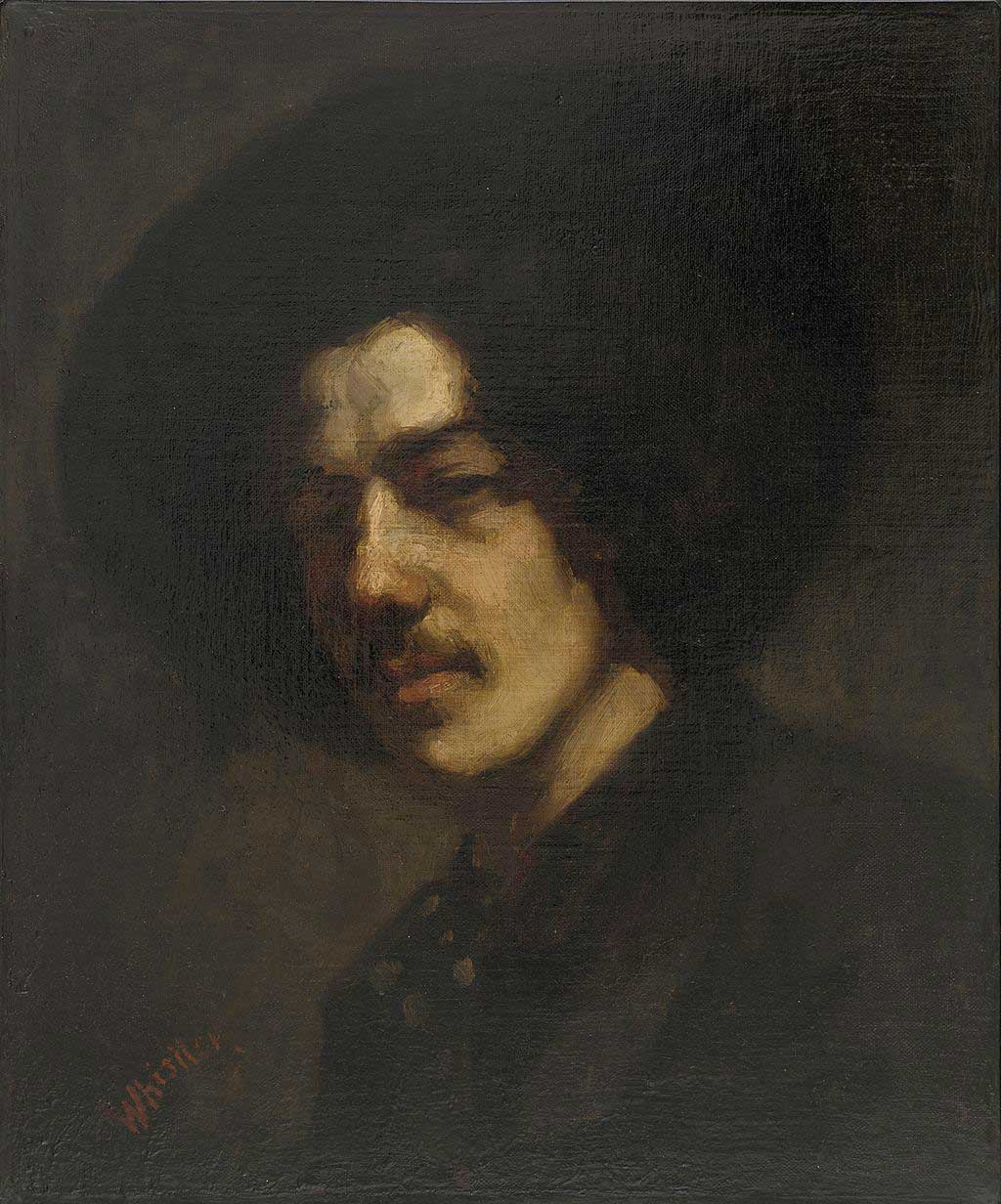
Portrait of Whistler with Hat – 1858
FIRST JOB
After West Point, Whistler worked as draftsman mapping the entire U.S. coast for military and maritime purposes. He found the work boring and he was frequently late or absent. He spent much of his free time playing billiards and idling about, was always broke, and although a charmer, had little acquaintance with women. After it was discovered that he was drawing sea serpents, mermaids, and whales on the margins of the maps, he was transferred to the etching division of the U.S. Coast Survey. He lasted there only two months, but he learned the etching technique which later proved valuable to his career.
At this point, Whistler firmly decided that art would be his future. For a few months he lived in Baltimore with a wealthy friend, Tom Winans, who even furnished Whistler with a studio and some spending cash. The young artist made some valuable contacts in the art community and also sold some early paintings to Winans. Whistler turned down his mother’s suggestions for other more practical careers and informed her that with money from Winans, he was setting out to further his art training in Paris. Whistler never returned to the United States.
Art study in France
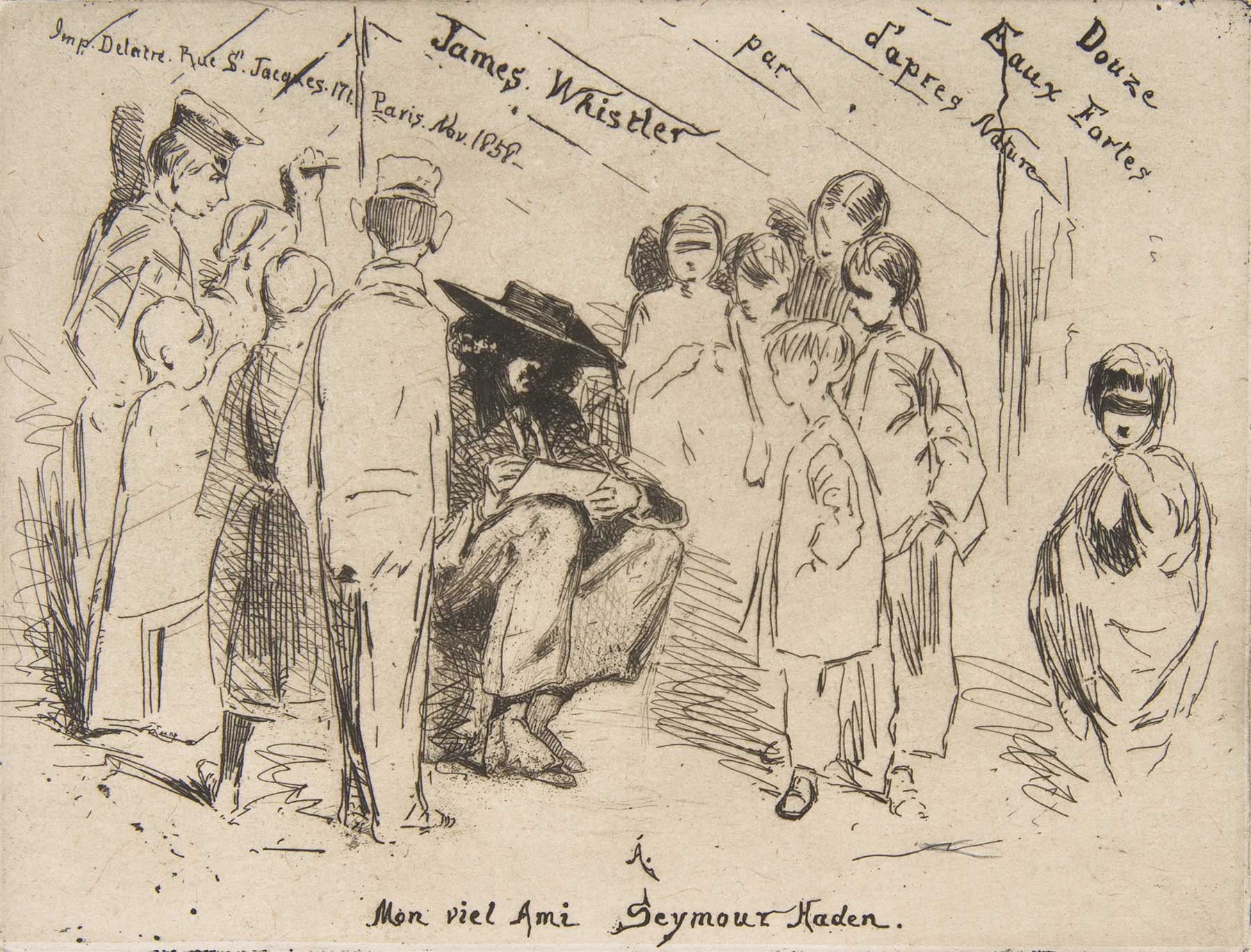
the French Set – 1858
Whistler arrived in Paris in 1855, rented a studio in the Latin Quarter, and quickly adopted the life of a bohemian artist. Soon he had a French girlfriend, a dressmaker named Héloise. He studied traditional art methods for a short time at the Ecole Impériale and at the atelier of Marc Charles Gabriel Gleyre. The latter was a great advocate of the work of Ingres, and impressed Whistler with two principles that he used for the rest of his career: line is more important than color and that black is the fundamental color of tonal harmony. Twenty years later, the Impressionists would largely overthrow this philosophy, banning black and brown as “forbidden colors” and emphasizing color over form. Whistler preferred self-study and enjoying the café life. While letters from home reported his mother’s efforts at economy, Whistler spent freely, sold little or nothing in his first year in Paris, and was in steady debt. To relieve the situation, he took to painting and selling copies from works at the Louvre and finally moved to cheaper quarters. As luck would have it, the arrival in Paris of George Lucas, another rich friend, helped stabilize Whistler’s finances for a while. In spite of a financial respite, the winter of 1857 was a difficult one for Whistler. His poor health, made worse by excessive smoking and drinking, laid him low.
Conditions improved during the summer of 1858. Whistler recovered and traveled with fellow artist Ernest Delannoy through France and the Rhineland. He later produced a group of etchings known as “The French Set”, with the help of French master printer Auguste Delâtre. During that year, he painted his first self-portrait, Portrait of Whistler with Hat, a dark and thickly rendered work reminiscent of Rembrandt. But the event of greatest consequence that year was his friendship with Henri Fantin-Latour, whom he met at the Louvre. Through him, Whistler was introduced to the circle of Gustave Courbet, which included Carolus-Duran (later the teacher of John Singer Sargent), Alphonse Legros, and Édouard Manet.
Also in this group was Charles Baudelaire, whose ideas and theories of “modern” art influenced Whistler. Baudelaire challenged artists to scrutinize the brutality of life and nature and to portray it faithfully, avoiding the old themes of mythology and allegory.
LONDON
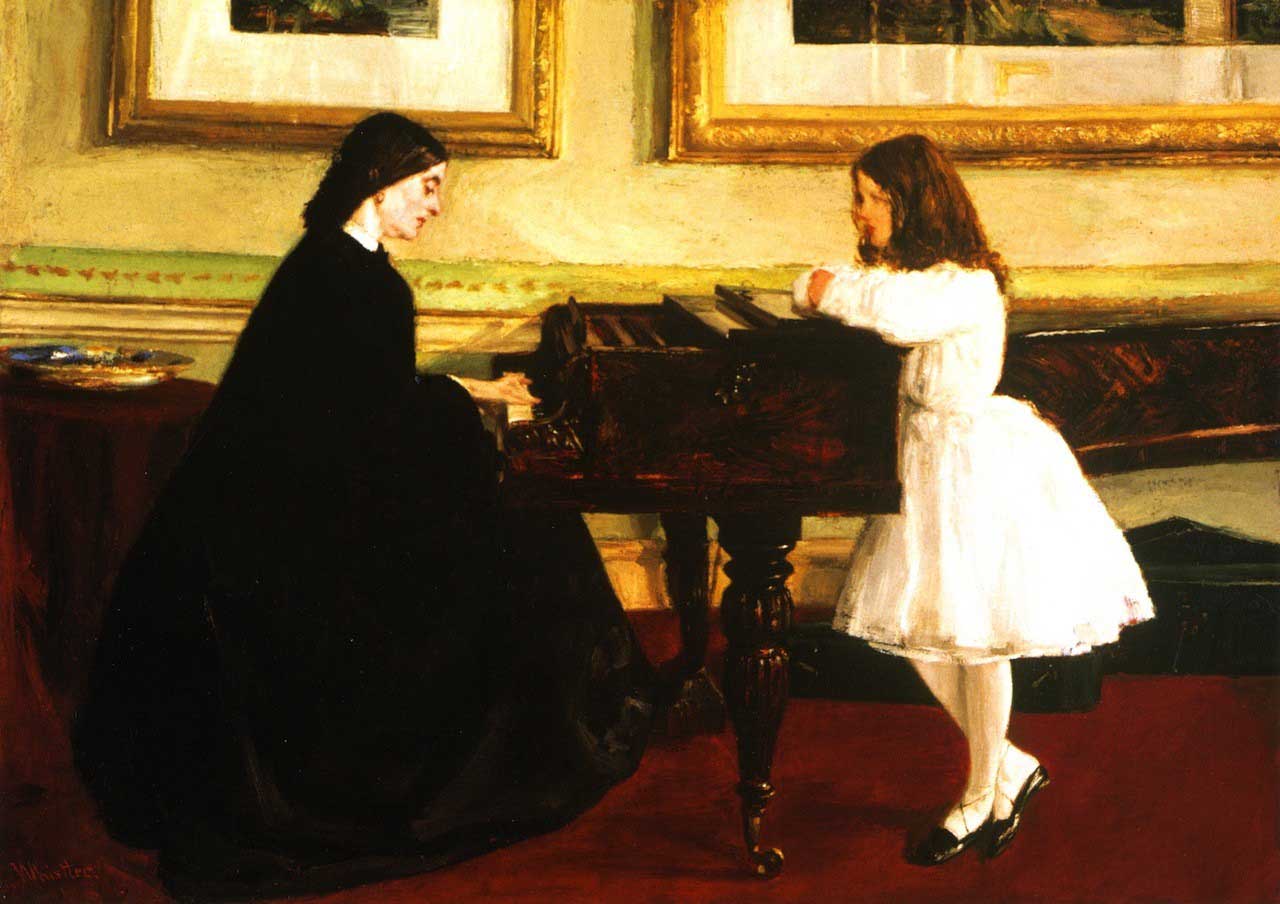
At the Piano – 1858
Reflecting the banner of realism of his adopted circle, Whistler painted his first exhibited work, La Mere Gerard in 1858. He followed it by painting At the Piano in 1859 in London, which he adopted as his home, while also regularly visiting friends in France. At the Piano is a portrait composed of his niece and her mother in their London music room, an effort which clearly displayed his talent and promise.
At this stage, he was beginning to establish his technique of tonal harmony based on a limited, pre-determined palette.
EARLY CAREER
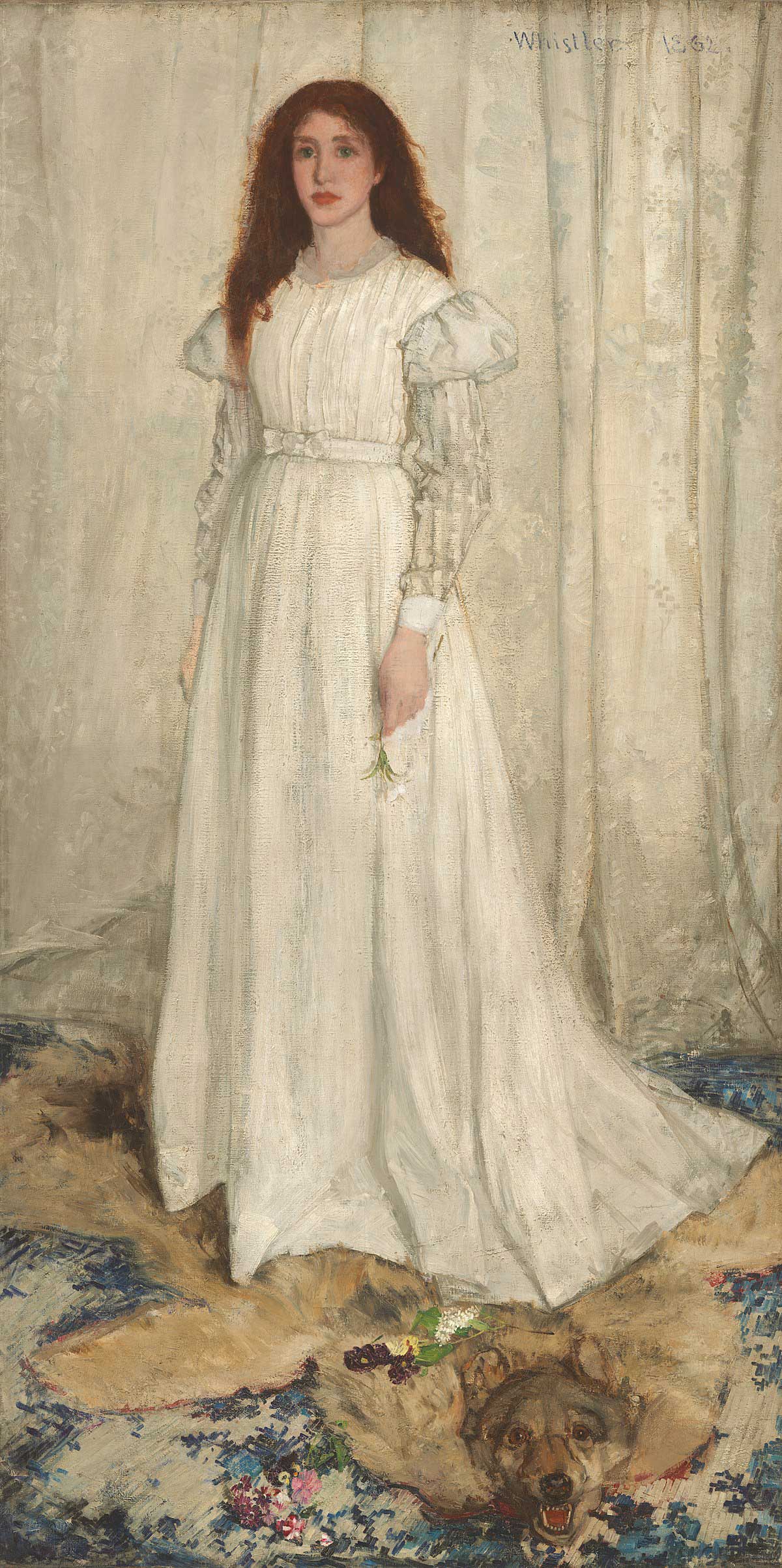
Symphony in White, No. 1: The White Girl – 1861
In 1861, after returning to Paris for a time, Whistler painted his first famous work, Symphony in White, No. 1: The White Girl. The portrait of his mistress and business manager Joanna Hiffernan was created as a simple study in white; however, others saw it differently. The critic Jules-Antoine Castagnary thought the painting an allegory of a new bride’s lost innocence. Others linked it to Wilkie Collins’s The Woman in White, a popular novel of the time, or various other literary sources. In England, some considered it a painting in the Pre-Raphaelite manner. In the painting, Hiffernan holds a lily in her left hand and stands upon a bear skin rug (interpreted by some to represent masculinity and lust) with the bear’s head staring menacingly at the viewer. The portrait was refused for exhibition at the conservative Royal Academy, but was shown in a private gallery under the title The Woman in White.
Countering criticism by traditionalists, Whistler’s supporters insisted that the painting was “an apparition with a spiritual content” and that it epitomized his theory that art should be concerned essentially with the arrangement of colors in harmony, not with a literal portrayal of the natural world.
Two years later, Whistler painted another portrait of Hiffernan in white, this time displaying his newfound interest in Asian motifs, which he entitled The Little White Girl. His Lady of the Land Lijsen and The Golden Screen, both completed in 1864, again portray his mistress, in even more emphatic Asian dress and surroundings. During this period Whistler became close to Gustave Courbet, the early leader of the French realist school, but when Hiffernan modeled in the nude for Courbet, Whistler became enraged and his relationship with Hiffernan began to fall apart. In January 1864, Whistler’s very religious and very proper mother arrived in London, upsetting her son’s bohemian existence and temporarily exacerbating family tensions. As he wrote to Henri Fantin-Latour, “General upheaval!! I had to empty my house and purify it from cellar to eaves.” He also immediately moved Hiffernan to another location.
MATURE CAREER
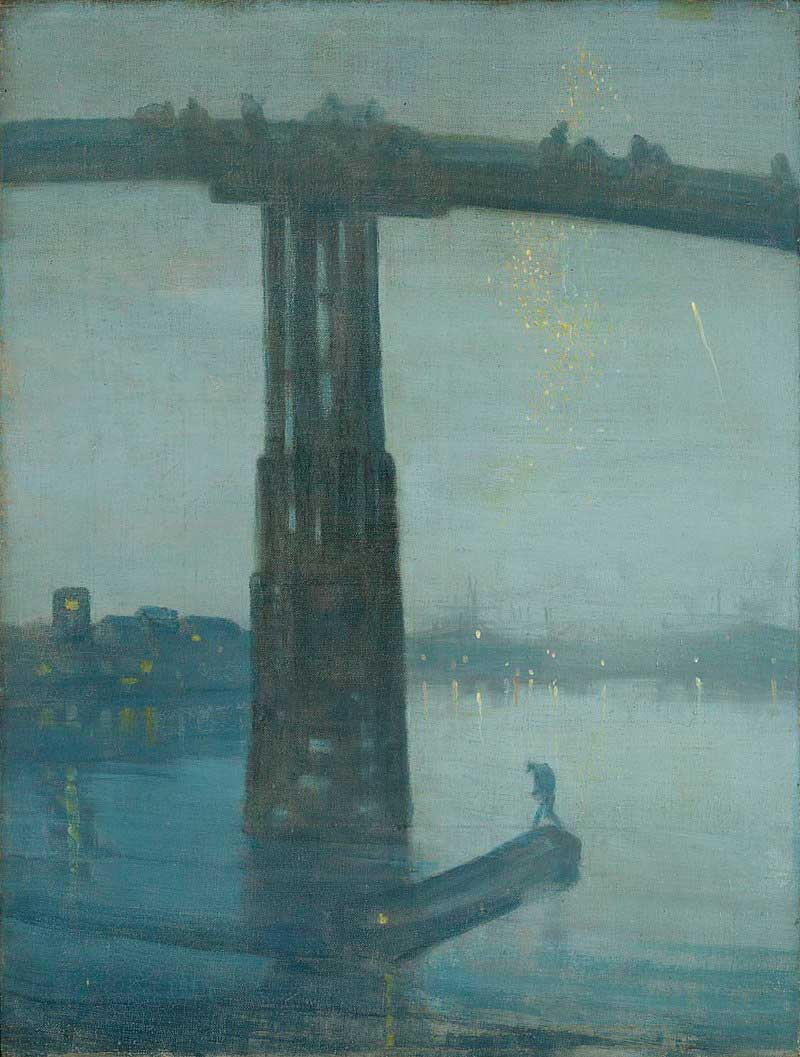
Nocturne: Blue and Gold – Old Battersea Bridge – 1872
In 1866, Whistler decided to visit Valparaíso, Chile, a journey that has puzzled scholars, although Whistler stated that he did it for political reasons. Chile was at war with Spain and perhaps Whistler thought it a heroic struggle of a small nation against a larger one, but no evidence supports that theory. What the journey did produce was Whistler’s first three nocturnal paintings—which he termed “moonlights” and later re-titled as “nocturnes”—night scenes of the harbor painted with a blue or light green palette. After he returned to London, he painted several more nocturnes over the next ten years, many of the River Thames and of Cremorne Gardens, a pleasure park famous for its frequent fireworks displays, which presented a novel challenge to paint. In his maritime nocturnes, Whistler used highly thinned paint as a ground with lightly flicked color to suggest ships, lights, and shore line. Some of the Thames paintings also show compositional and thematic similarities with the Japanese prints. In 1872, Whistler credited his patron Frederick Leyland, an amateur musician devoted to Chopin, for his musically inspired titles.
“I say I can’t thank you too much for the name ‘Nocturne’ as a title for my moonlights! You have no idea what an irritation it proves to the critics and consequent pleasure to me—besides it is really so charming and does so poetically say all that I want to say and no more than I wish!”
At that point, Whistler painted another self-portrait and entitled it Arrangement in Gray: Portrait of the Painter (c. 1872), and he also began to re-title many of his earlier works using terms associated with music, such as a “nocturne”, “symphony”, “harmony”, “study” or “arrangement”, to emphasize the tonal qualities and the composition and to de-emphasize the narrative content.
Whistler’s nocturnes were among his most innovative works. Furthermore, his submission of several nocturnes to art dealer Paul Durand-Ruel after the Franco-Prussian War gave Whistler the opportunity to explain his evolving “theory in art” to artists, buyers, and critics in France.
LEGACY
Whistler was inspired by and incorporated many sources in his art, including the work of Rembrandt, Velázquez, and ancient Greek sculpture to develop his own highly influential and individual style. He was adept in many media, with over 500 paintings, as well as etchings, pastels, watercolors, drawings, and lithographs.Whistler was a leader in the Aesthetic Movement, promoting, writing, and lecturing on the “art for art’s sake” philosophy.
With his pupils, he advocated simple design, economy of means, the avoidance of over-labored technique, and the tonal harmony of the final result. Whistler has been the subject of many major museum exhibitions, studies, and publications. Like the Impressionists, he employed nature as an artistic resource. Whistler insisted that it was the artist’s obligation to interpret what he saw, not be a slave to reality, and to “bring forth from chaos glorious harmony”.
During his life, he affected two generations of artists, in Europe and in the United States. Whistler had significant contact and exchanged ideas and ideals with Realist, Impressionist, and Symbolist painters. Famous protégés for a time included Walter Sickert and writer Oscar Wilde. His Tonalism had a profound effect on many American artists, including John Singer Sargent, William Merritt Chase, Henry Salem Hubbell and Willis Seaver Adams
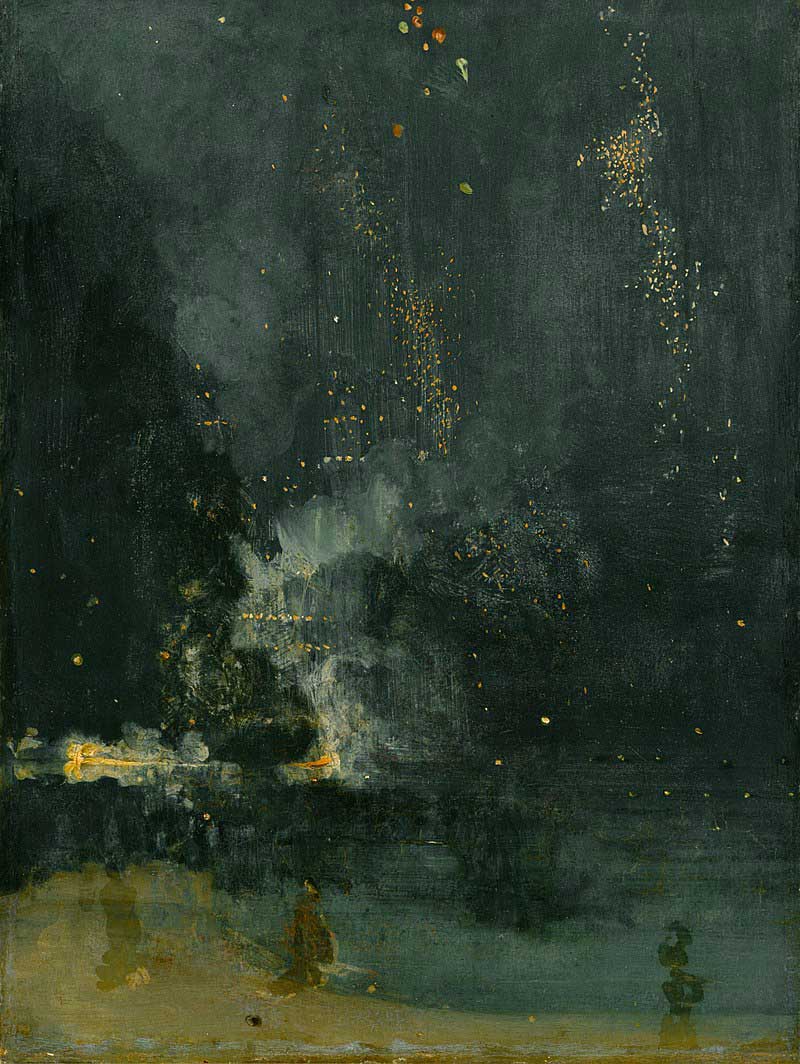
Nocture in Black and Gold, Falling Rockets – 1872
TECHNIQUE
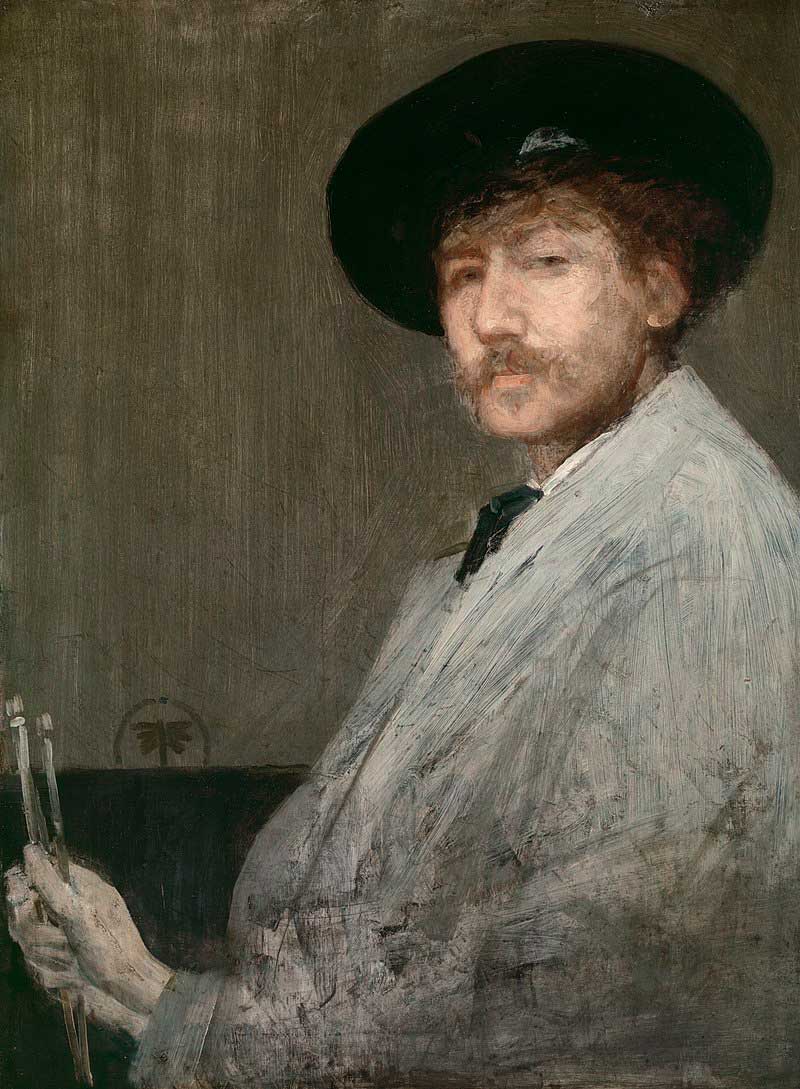
Arrangement in Gray: Portrait of the Painter – 1872
Whistler’s approach to portraiture in his late maturity was described by one of his sitters, Arthur J. Eddy, who posed for the artist in 1894:
He worked with great rapidity and long hours, but he used his colours thin and covered the canvas with innumerable coats of paint. The colours increased in depth and intensity as the work progressed. At first the entire figure was painted in greyish-brown tones, with very little flesh colour, the whole blending perfectly with the greyish-brown of the prepared canvas; then the entire background would be intensified a little; then the figure made a little stronger; then the background, and so on from day to day and week to week, and often from month to month. … And so the portrait would really grow, really develop as an entirety, very much as a negative under the action of the chemicals comes out gradually—light, shadows, and all from the very first faint indications to their full values. It was as if the portrait were hidden within the canvas and the master by passing his wands day after day over the surface evoked the image.
Some Portrait Painting Tips from Whistler
The reasons this portrait was never finished by Whistler are unknown but offer observers the opportunity to see his painting process at work. First take note of how the artist focused his attention. The figure’s dress is just a pencil sketch. The background is roughed in and the sitter’s face is sensitively modeled. Working out from the most important parts of the painting, Whistler created a work that, though unfinished, still has star power.
In a letter to a budding artist and nephew, Thomas Whistler, Whistler responded to questions about how to paint a portrait and here are the highlights.
On Drawing and First Brushmarks
Indicate the head with charcoal – that is find its place on the canvass – and then draw it lightly with a brush – you might use a little grey for this purpose made of Ivory black – white – venetian red & a little yellow ochre.
Rub this, as you draw, with a hog hair brush, into the shadow – and in short draw and model lightly your whole head with this warm grey or brown…
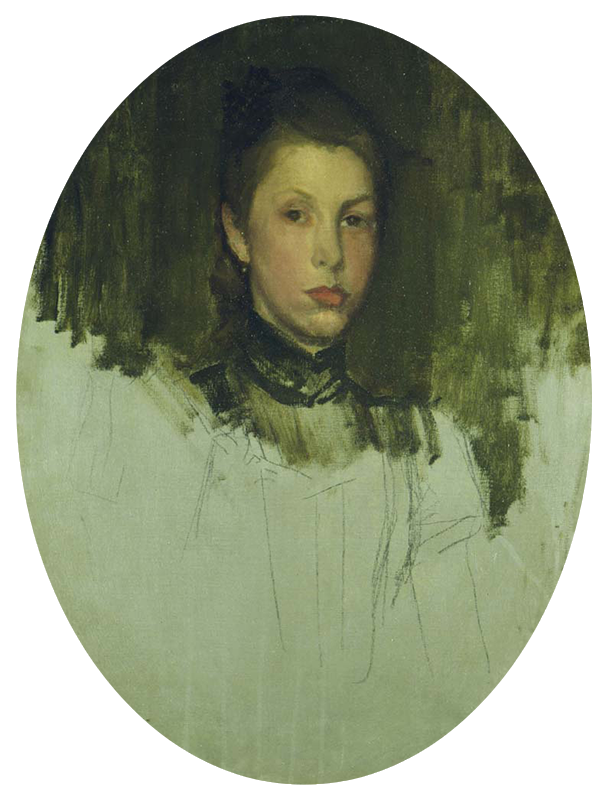
On Painting Fatigue and the Second Pass
If tired, then let this dry completely – that is put it away for 3 or 4 days – Put your canvass out in the open air – with its face to the wall and its back to the sun –
When you take it up again (You do not, you see, paint over the surface enclosed in your drawing with white or other preparation), you may work over the same places again with the same material only that now as your head is already found you will have less trouble – and in short this will to all intents & purposes be a first painting…
On Skin Tones
Continue now with your flesh color* – painting from the light into the shadow while the shadow is wet – so that you will really be covering the whole head in one sitting and indeed with one painting –
This Tom is the simplest and best way out of it all – You will mix your flesh tints of course with white – and as you get towards the shadow you will see how much darker the grey or brown looks than nature, and then you will percieve [sic] the color that there is in shadow and you will be enabled to reach that by a mixture of your grey with some of the flesh tone on your palette – and so my dear Tom you will proceed and finish…
On Feeling Unsatisfied
If you are not quite satisfied the next day, don’t be disheartened – put away your canvas again for some few days and only take it up when completely dry…
“An Artist’s career always begins tomorrow.”
– James Abbott McNeill Whistler
ENJOY THIS SLIDESHOW OF SOME OF HIS WORK…
Read more about Whistler here…
See an extensive collection of his work go here…
Here’s a Pinterest board full of his work to inspire you!
STUDIOWORKS HOMEWORK
I highly recommend you watch this short documentary about Whistler and his famous work – Arrangement in Grey and Black No. 1 (Whistler’s Mother)
Master Artist Guide
Sketchbook Explorations
EXPLORATION 1
Whistler Inspired
I particularly like Whistler’s nocturne pieces so I thought it might be fun to try one. I love the mysterious essence of them and the subtle tonal quality of moonlight, inky darkness and flashpoints of light. I did a small study in oils on canvas for mine but do yours in any medium you enjoy. Alternatively, perhaps you are more drawn to his portraits….try your hand at doing a study of one of his many pieces or do a portrait inspired by his use of value and limited color.
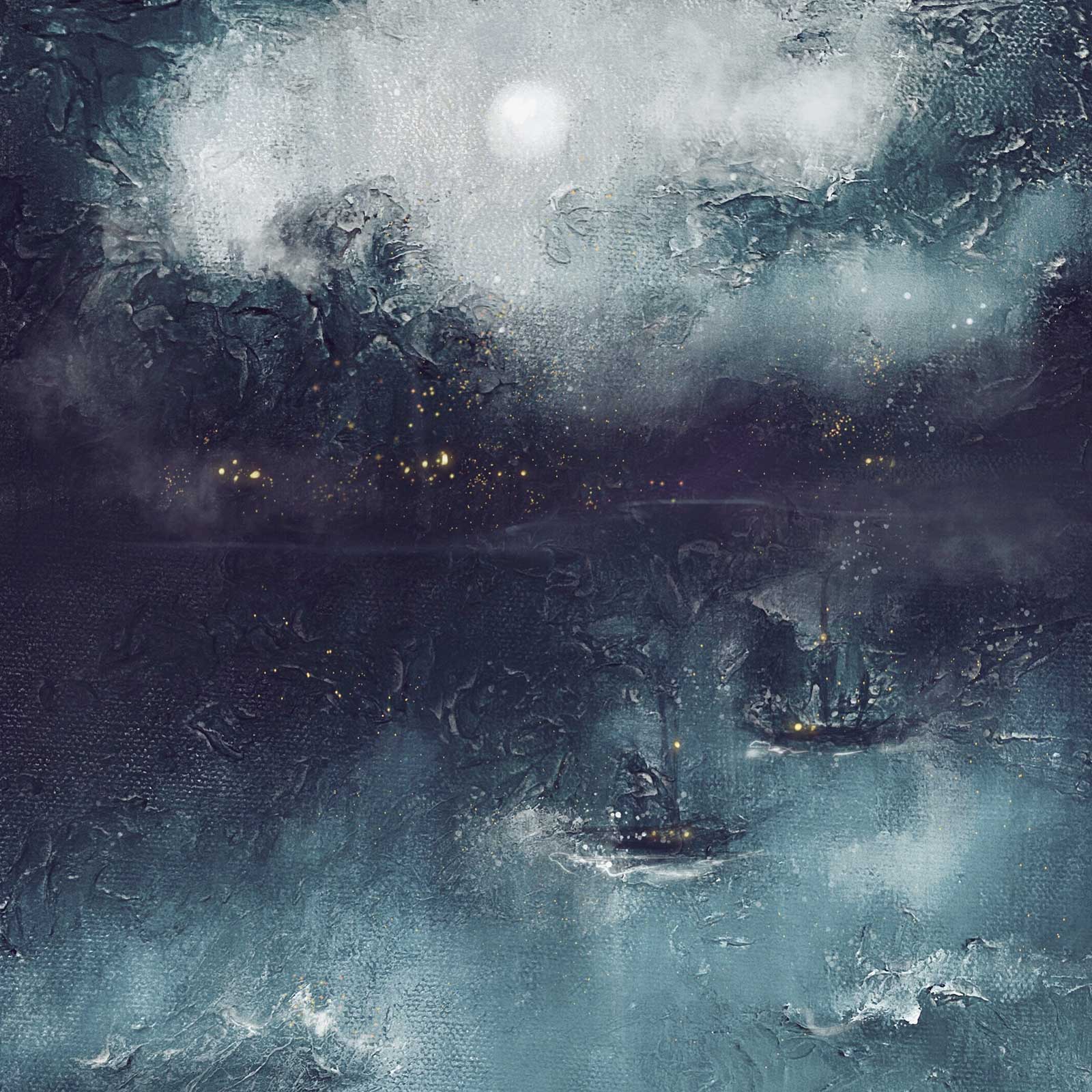
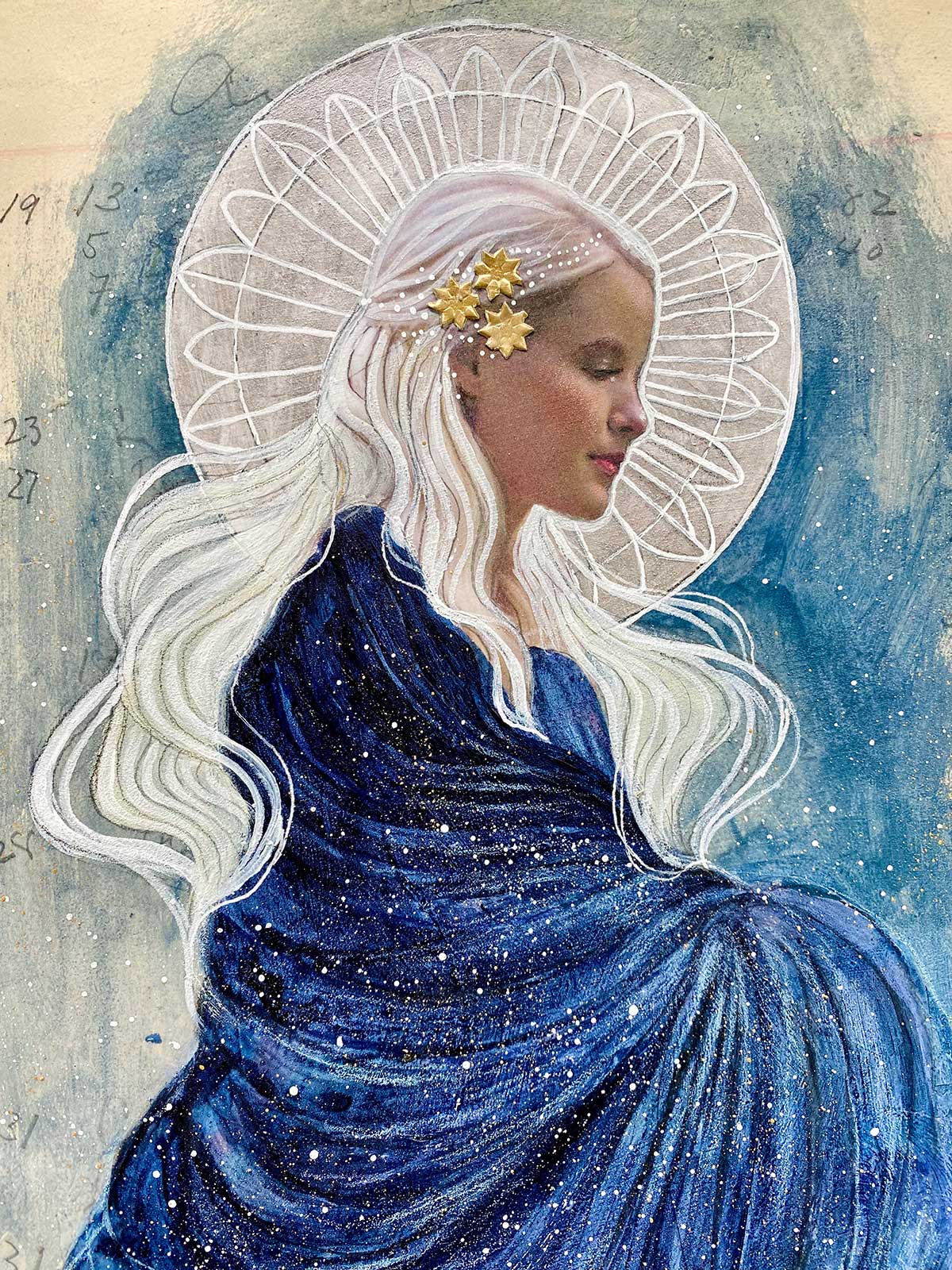
EXPLORATION 2
Air Goddess
Create a sketch, collage, journal page or painting dedicated to an Air Goddess of your choice. Let the symbols, colors and messages from this Goddess inspire you! I loved creating my Arianrhod.
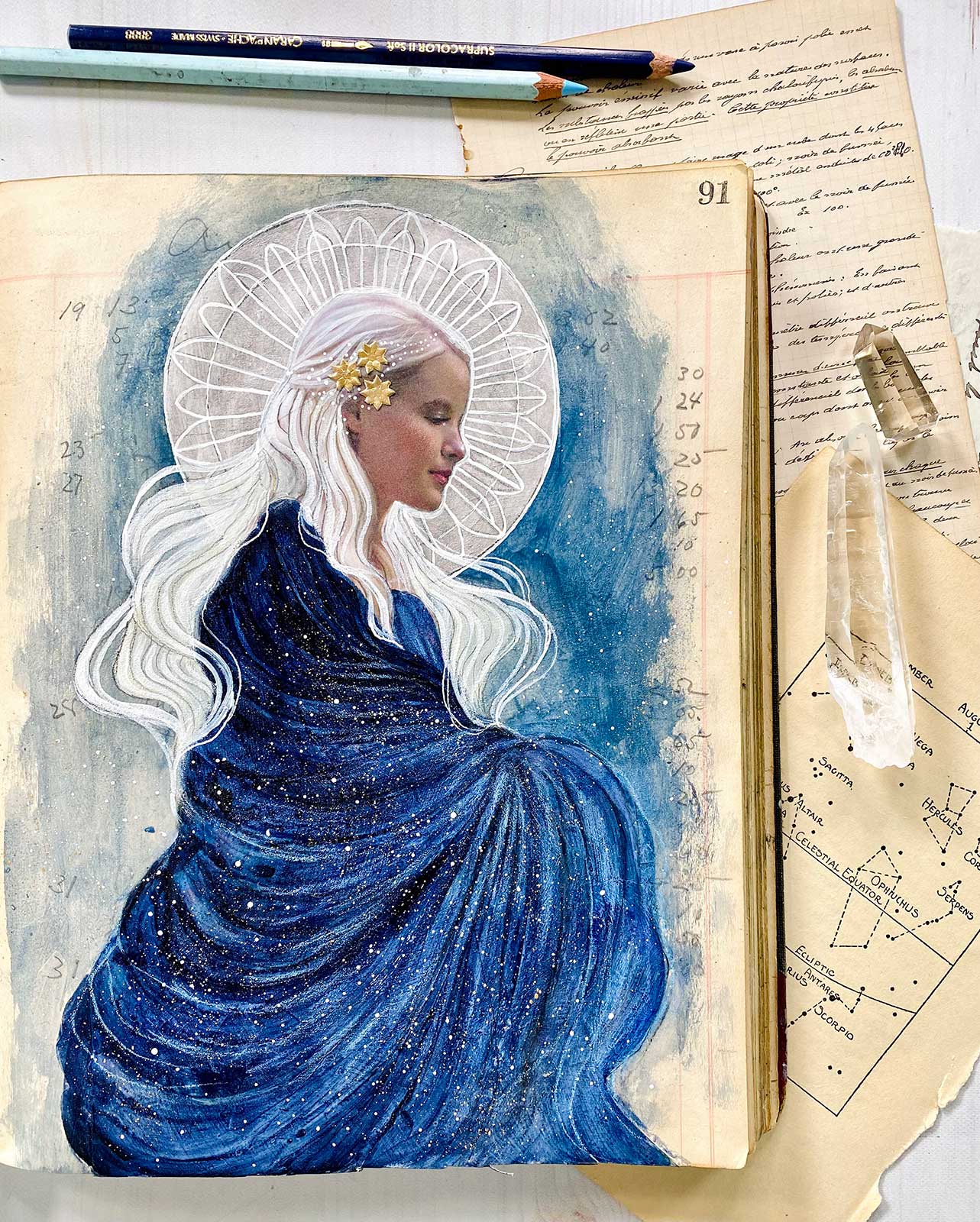
EXPLORATION 3
Air Collage
Create a collage in your sketchbook dedicated to the Element of Air. Use imagery from magazines or other sources and add in symbols, quotes or elements that help you connect deeper to this Element. Have fun with this relaxing exploration.
“Feelings come and go like clouds in a windy sky. Conscious breathing is my anchor.”
– Thich Nhat Hanh
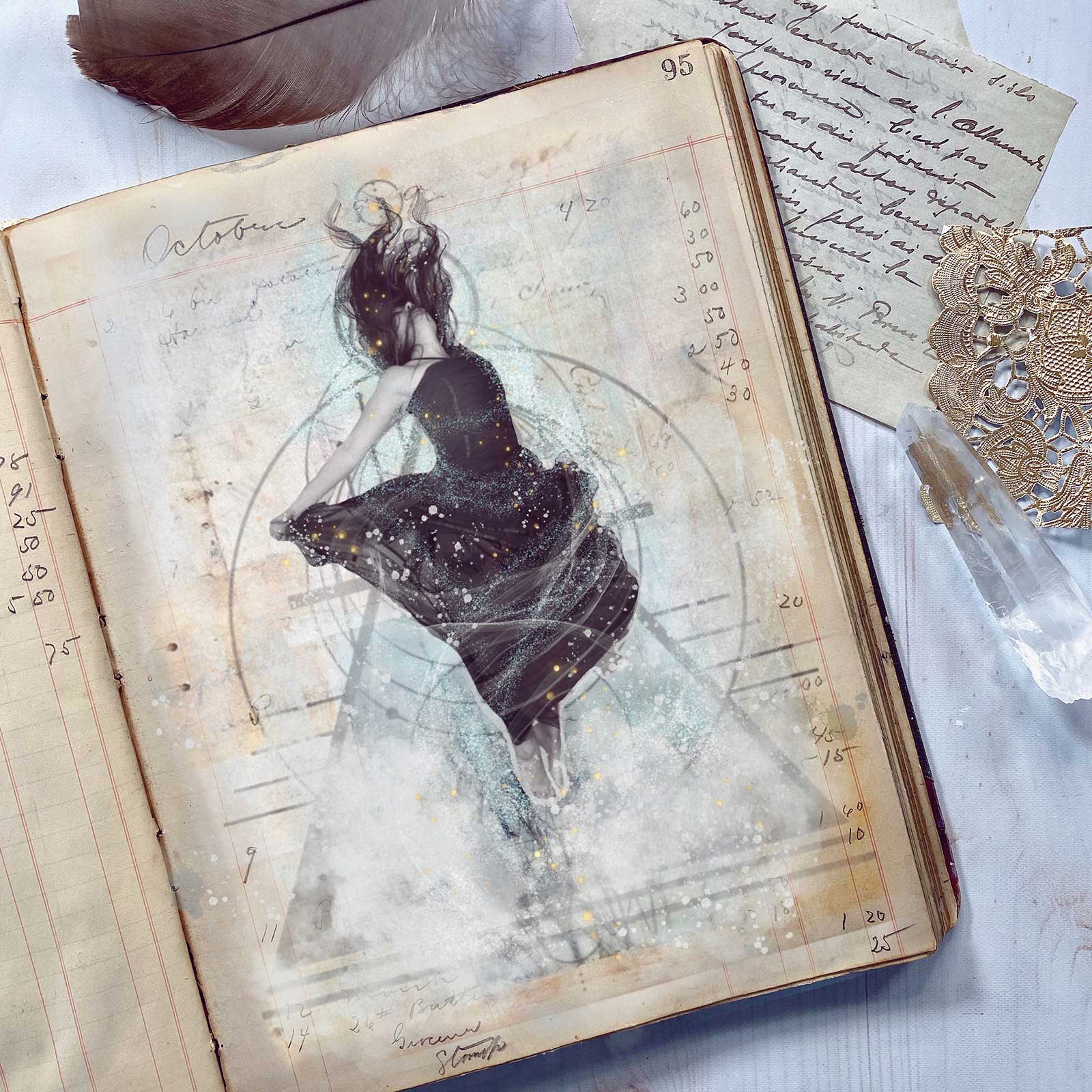
MONTHLY ART LESSONS
with Dawn Vander Stoep
STUDIOWORKS
Submission Calls
If you’d like to be featured in an upcoming Studioworks Journal, we’d love to have you join our Creative Network! Our intention with Studioworks has always been to cultivate community involvement and collaboration. Featuring members from our creative community is such an honor and a beautiful way to share the light you all bring. Come join us!
STUDIOWORKS PODCAST
issue thirty-three
You can also listen to this month’s issue of the Studioworks journal. I find I love listening to books, podcasts and music while I draw, paint or go on a long walk. Enjoy.
Studioworks : issue thirty-three
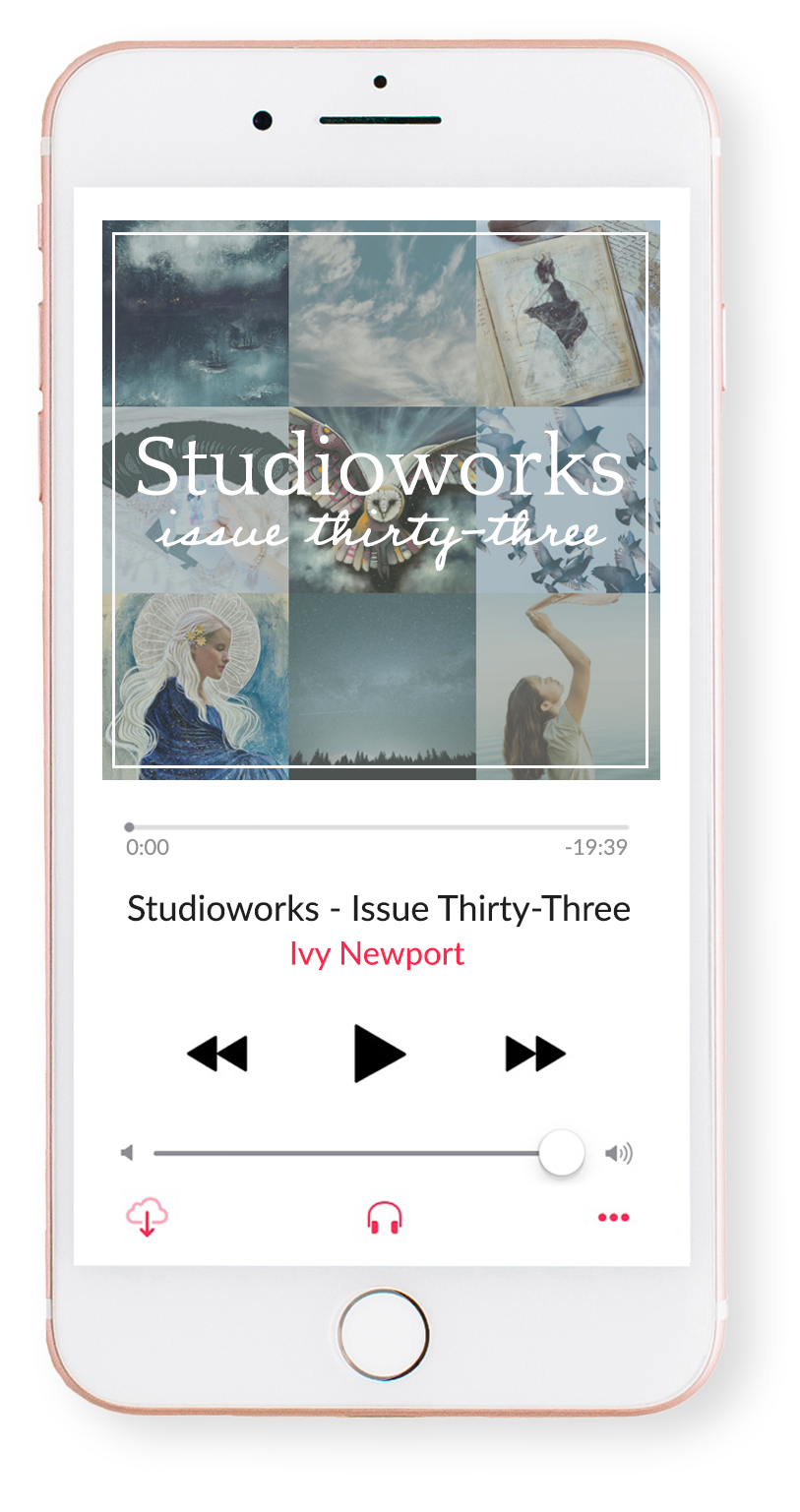
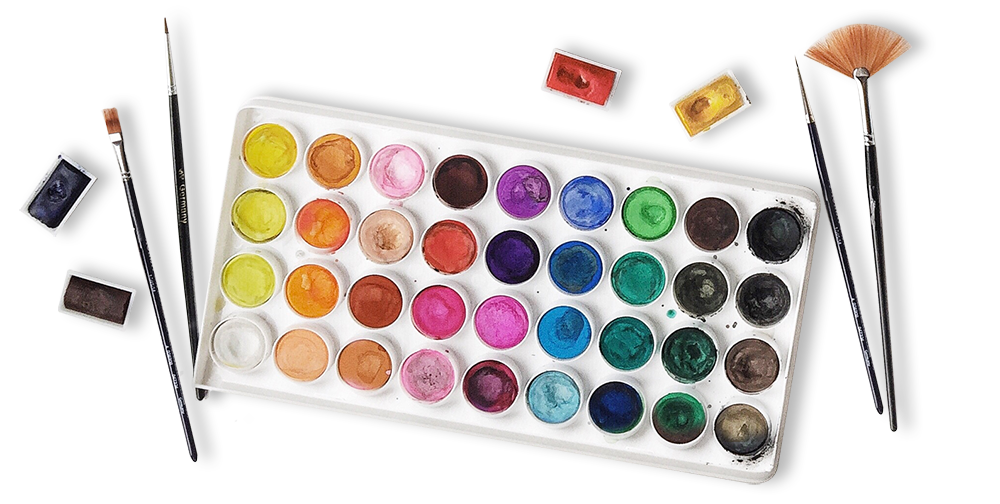
inspiration: curated
Books to Discover & Enjoy
(although this is a digital book it is full of beautiful images of Whistler’s work for a very reasonable price of $3)
MUSIC PLAYLIST
I had so much fun curating this list. I hope you enjoy!!
THINGS TO WATCH
PINTEREST BOARDS
CLASSES TO TRY
Here are just a few of our fantastic classes! They feel in alignment with this month’s issue! I highly recommend checking them out if you haven’t already. Enjoy!

© 2019 IVYNEWPORT, LLC ALL RIGHTS RESERVED.



